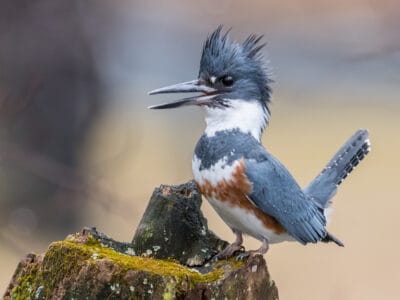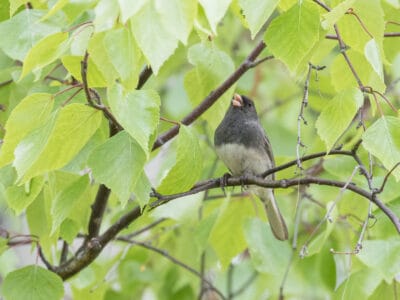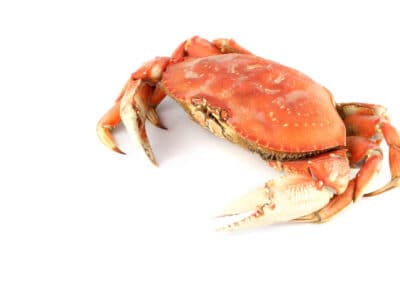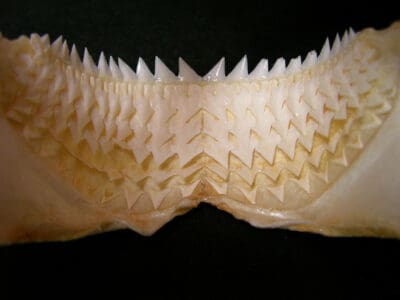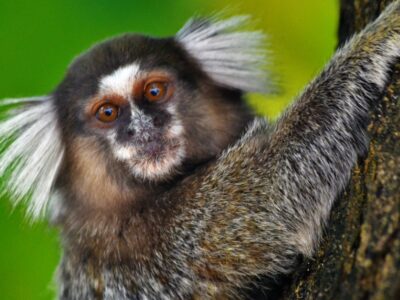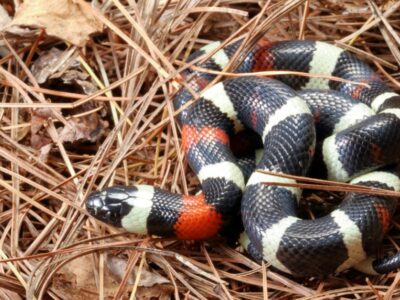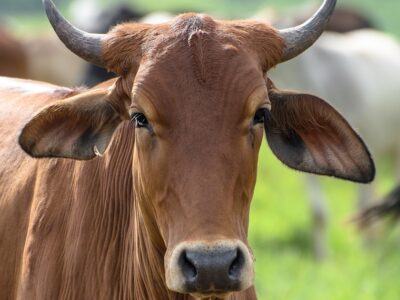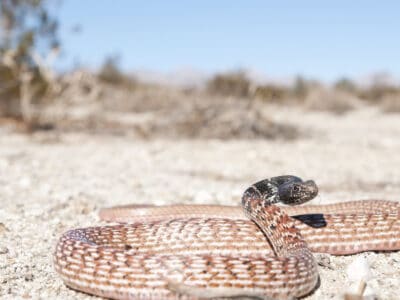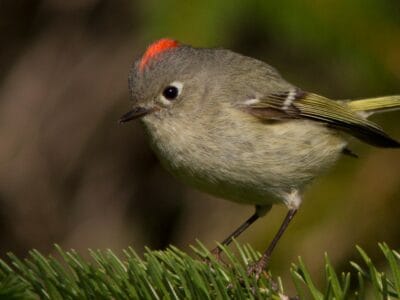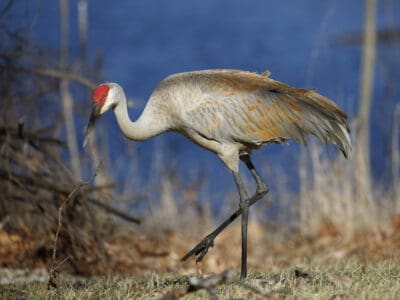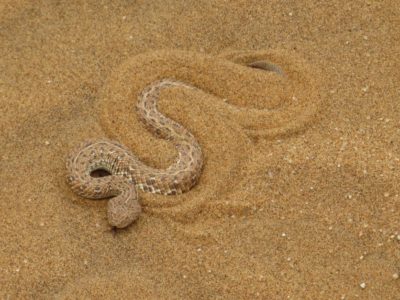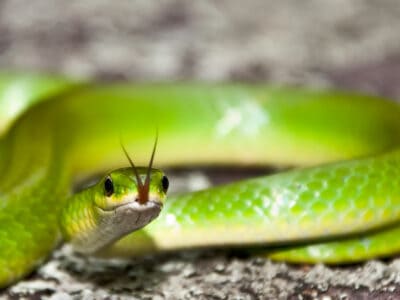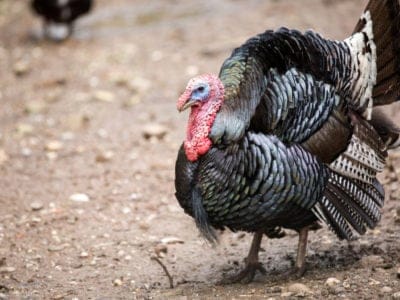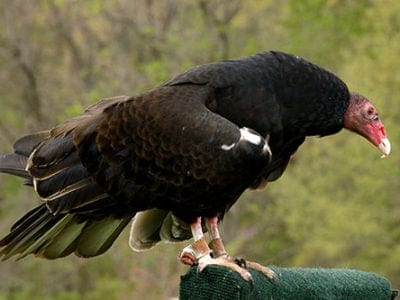Below you can find a complete list of Mexican animals. We currently track 449 animals in Mexico and are adding more every day!
Mexico is among the world’s most diverse countries for exotic animal wildlife. Straddling the line between temperate and tropical America, the Mexican ecosystem is a rich blend of deserts and shrublands, grasslands, temperate forests, tropical forests, mountains, and wetlands. While Mexico may be rich in native species, it’s also an important destination for birds and insects migrating from the north. The Monarch Butterfly Biosphere Reserve in Michoacán state is a UNESCO World Heritage Site.
The Official National Animal of Mexico
The official national animal and national bird of Mexico is the golden eagle. As an important symbol of Mexican culture dating back to Pre-Columbian times, it is featured almost everywhere. An image of the golden eagle eating a rattlesnake even adorns the country’s flag. Other important animals in Mexico include the jaguar (the national mammal) and the Xoloitzcuintli (national dog).
Where to Find the Top Wild Animals in Mexico
The best place to find Mexico’s diverse animals is at its rich national parks. The Basaseachic Falls National Park is located in the center of the Sierra Madre Occidental mountain range within the state of Chihuahua. The mountains, valleys, and rich forests are home to a diverse range of exotic wild animals. The Palenque National Park, located among Mayan ruins in the southern state of Chiapas, is home to many birds and arboreal mammals (like the iconic howler monkey) in the dense foliage of the surrounding rainforests. Mexico City itself is home to several national parks such as the Cumbres del Ajusco and the Nevado de Toluca. Finally, visitors might also want to check out the Cumbres de Monterrey National Park near the Sierra Madre and Iztaccíhuatl-Popocatépetl National Park within the volcanic range of Puebla and Morelos.
The Most Dangerous Animals in Mexico Today
Mexico is home to many dangerous predators and poisonous snakes and sea creatures that can cause serious injury or death. Here is a small sample of them:
- Rattlesnake – Found in the deserts of western Mexico, the rattlesnake has a very painful toxin that can cause tingling, weakness, nausea, vomiting, swelling, and in very extreme cases, heart failure. Fortunately, this snake almost always gives a warning before it strikes.
- Fer-de-lance Snake – Located in southern Mexico, this reptile can deliver a toxin that causes nausea, vomiting, swelling, numbness, fever, and internal bleeding, though death is relatively rare.
- Yellow-Bellied Sea Snake – Black on top and yellow along the belly, this snake has a neurotoxin that can cause serious tissue damage. As a marine animal, it isn’t often encountered by people.
- Jaguar – Although jaguar attacks are exceedingly rare, their bite is strong enough to pierce a thick shell. The closely related cougar also has a very strong and dangerous bite.
- Box Jellyfish – Famous for its sublime, ethereal beauty, the box jellyfish can also deliver a very painful sting that can sometimes be fatal to swimmers in the Gulf of Mexico and the Pacific. As with many other poisonous animals, though, documented deaths are rare.
You can read about another snake in Mexico, Crotalus basiliscus, which is also the largest snake found in Mexico. The jaguar is one of the wild animals in Mexico. It possesses such a powerful bite, it can pierce the shell of turtles and tortoises.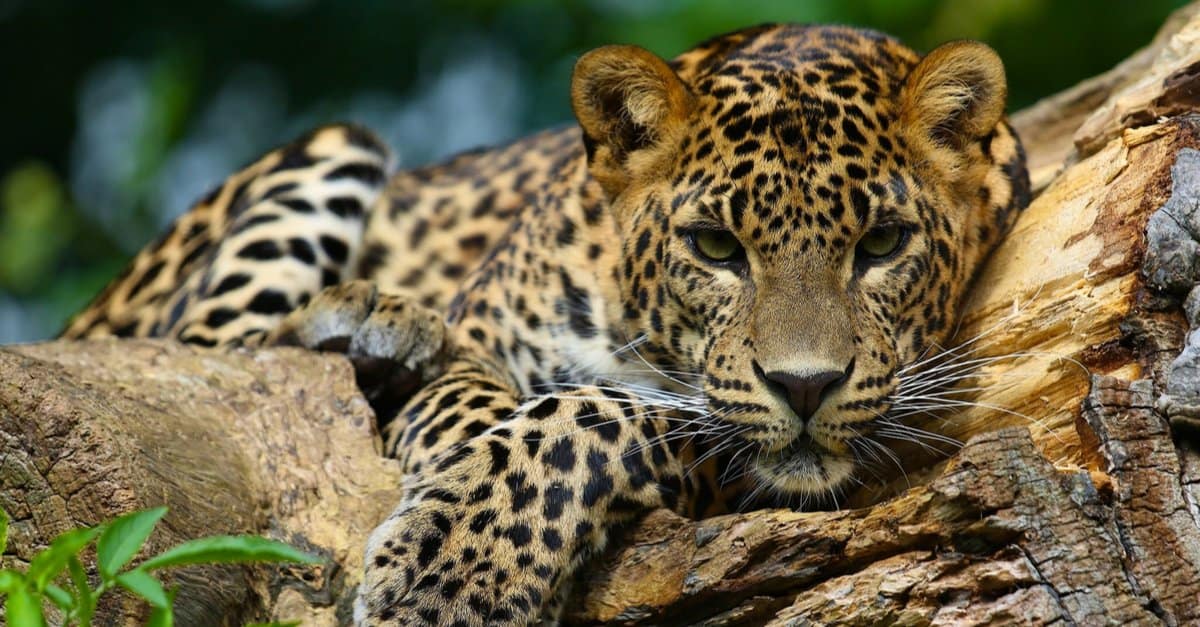
©L-N/Shutterstock.com
©L-N/Shutterstock.com
Endangered Animals in Mexico
Wild animals in Mexico face serious threats from urbanization, pollution, and deforestation. Many species are now in danger of complete extinction.
- Axolotl – Also known as the Mexican walking fish, the unique Axolotl is actually a species of salamander. Since it does not undergo the typical amphibian metamorphosis, this species retains several juvenile characteristics, including external gill stalks behind the head. The Axolotl is native to some lakes near Mexico City, but urbanization and water pollution have nearly driven it to extinction.
- Vaquita – Roughly translated as “little cow,” the unique Vaquita is the smallest of all living cetaceans. This tiny porpoise lives in the northernmost part of the Gulf of California.
- Mexican Wolf – This distinct subspecies of the gray wolf has a very small range in northern Mexico.
- Mexican Howler – This howler monkey is a critically endangered subspecies of the vulnerable mantled howler. The most prominent characteristics of this monkey are the prehensile tail and distinctive howling sound.
Flag of Mexico
The Mexican flag consists of three vertical stripes in green, white, and red. The red represents the struggle for freedom from Spain, after being under the country’s control for over 300 years. The green band symbolizes hope, with the white band standing for unity. In the center of the flag, sits the Mexican Coat of Arms, which depicts an eagle sitting on a cactus with a snake in its mouth. This image references a famous legend in Mexico and reminds the Aztec people of their history.
Spiders Found in Mexico
Did you know that Mexico has more tarantula species than every other region in the world (except Central and South America)? Some of these spiders are harmless to humans, but others have incredibly potent venom. You’ll find green lynx spiders, woodlouse hunters, and many more in Mexico! Some of the spiders in Mexico will send chills down your spine!
Up Next
Mexican Animals

Acadian Flycatcher
Their nests are sloppily held together and have an abandoned appearance
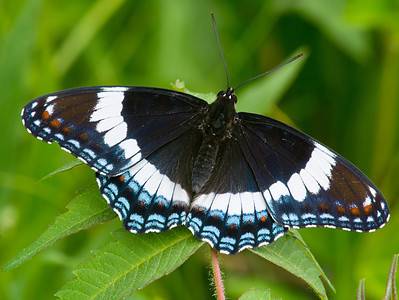
Admiral Butterfly
Stunningly beautiful wings
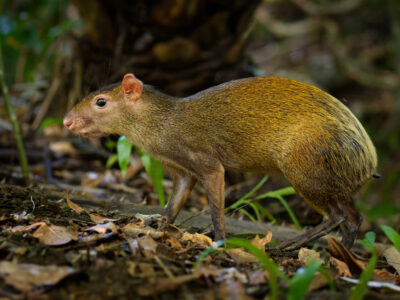
Agouti
The agouti is one of the only animals that can crack open Brazil nut pods!
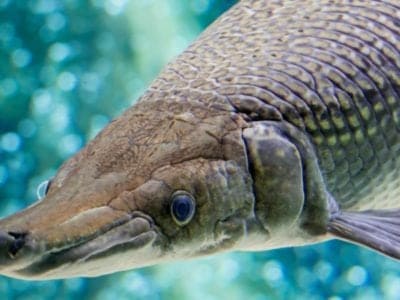
Alligator Gar
The alligator gar has toxic eggs to protect against predators
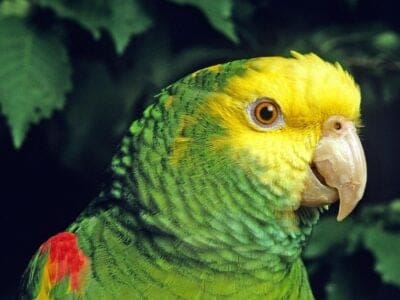
Amazon Parrot
These parrots can be trained to be "talking birds" that mimic human speech
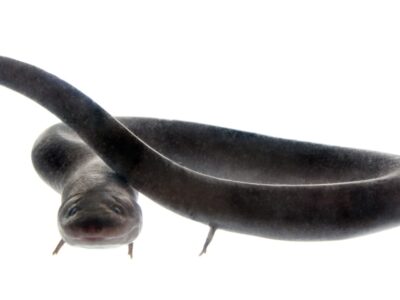
American Eel
Don't eat raw eel! Their blood is poisonous to humans when consumed raw.
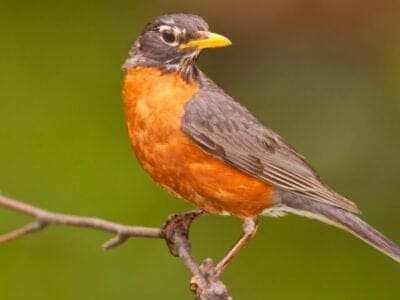
American Robin
The color “Robin egg blue” is named after the hue of their eggs.
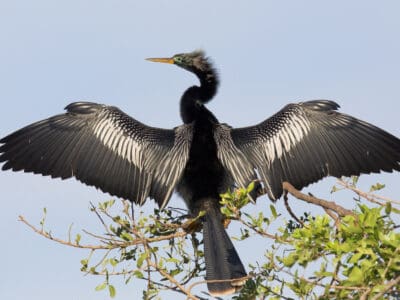
Anhinga
Their name means snake bird
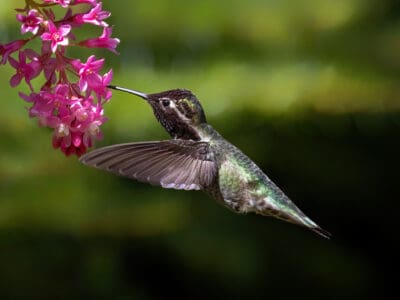
Anna’s Hummingbird
Anna's Hummingbird wings beat 40-50 times per second during normal flight
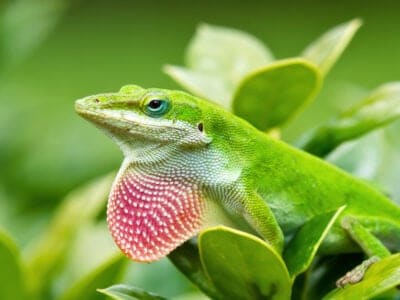
Anole Lizard
There are just under 400 species, several of which change color.

Ant
First evolved 100 million years ago!

Anteater
Has the longest tongue of any animal in relation to its body size!
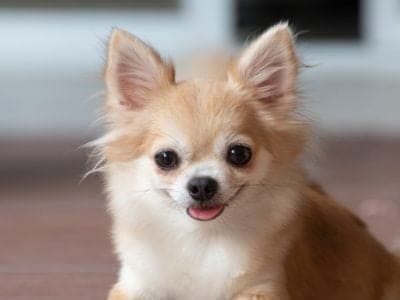
Apple Head Chihuahua
Apple Head Chihuahuas are toy breed dogs with a history dating back to ancient Mexico. They are lovable, loyal, smart and courageous with a lengthy lifespan despite being the world's smallest canines.

Arctodus
The South American spectacled bear is its closest relative living today.
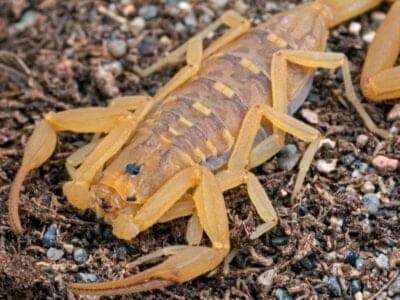
Arizona Bark Scorpion
Under UV light they glow a bright blue or green, making them easy to spot.
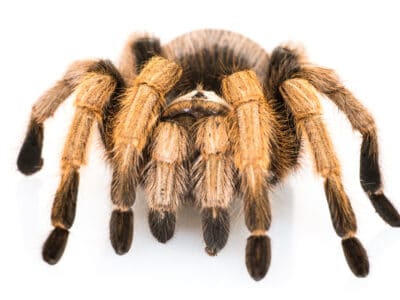
Arizona Blonde Tarantula
They are covered in thousands of fuzzy blonde hairs.

Armadillo
Can curl into a hard, protective ball!

Armyworm
They are so named because they "march" in armies of worms from one crop to another in search of food

Asian Lady Beetle
Asian lady beetles infest indoor spaces, but they do not reproduce indoors.

Australorp Chicken
Australorp chickens are among the best egg producers in the world, Hens in Australia set consecutive world records with one laying 364 eggs in a single year!
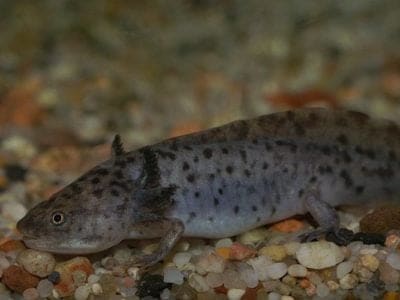
Axolotl
Found only in one complex of lakes!

Bagworm Moth Caterpillar
They continually enlarge their protective cases
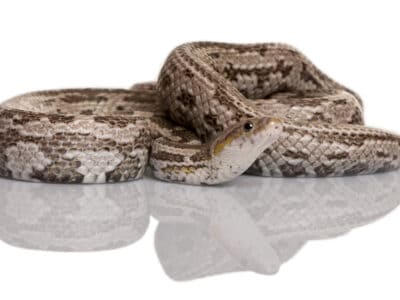
Baird’s Rat Snake
Baird’s rat snake subdues its prey through suffocation.

Barn Owl
Found everywhere around the world!

Barn Swallow
Older offspring help care for new hatchlings.

Barred Owl
Like other owls, the barred owl swallows its prey whole.
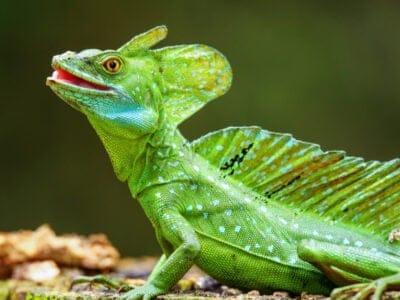
Basilisk Lizard
Can run/walk on water.

Bat
Detects prey using echolocation!
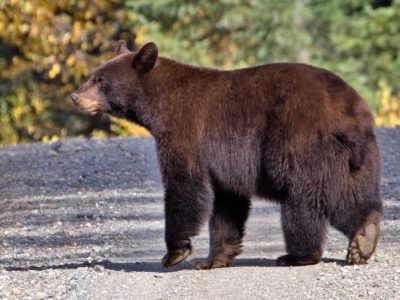
Bear
There are 8 different species!

Bed Bugs
Bed bugs feed for 4-12 minutes.

Bee
Rock paintings of bees date back 15,000 years

Beetle
There are more than 350,000 different species

Beewolf wasp
They hunt bees
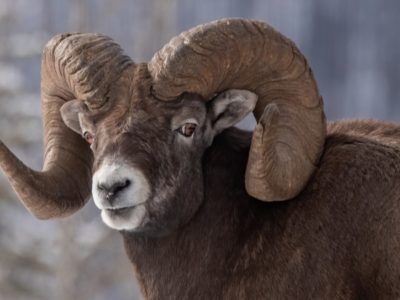
Bighorn Sheep
Bighorn rams can run at speeds up to 40 miles per hour when fighting for dominance.

Bird
Not all birds are able to fly!

Biscuit Beetle
The biscuit beetle form a symbiotic relationship with yeast
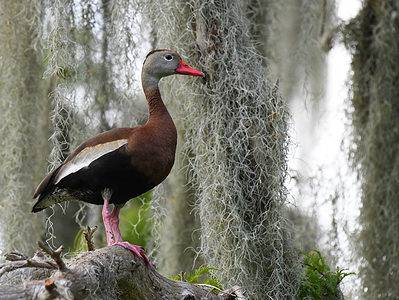
Black-Bellied Whistling Duck
They have bright pink bills.

Black Sea Bass
Black sea bass males become fluorescent blue and green during the breeding season.
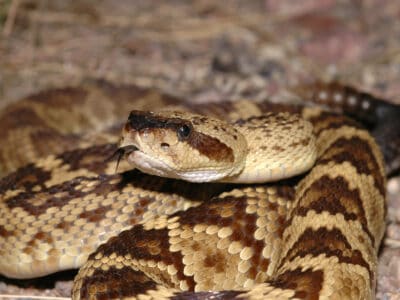
Black-Tailed Rattlesnake
One of the most beautiful rattlesnakes, they have solid black tails.

Black Widow Spider
They typically prey on insects!
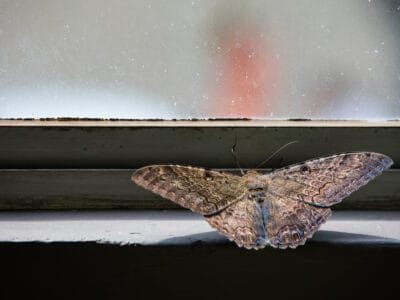
Black Witch Moth
Some folklore associate Black Witch Moths with bad luck (and even death!), while other associates them with good fortune.
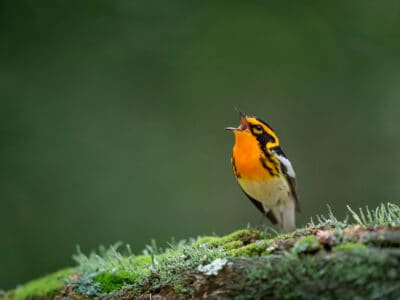
Blackburnian Warbler
They are the only songbird in North America with an orange throat!
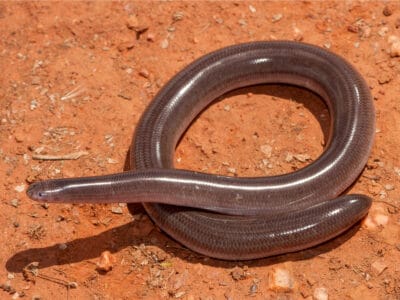
Blind Snake
The blind snake is often mistaken for a worm.
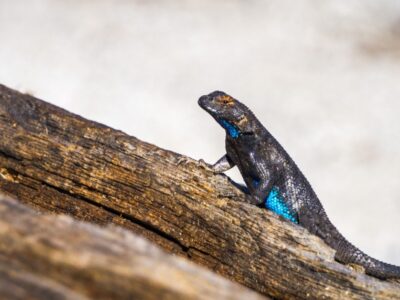
Blue Belly Lizard
This species can detach its tail to escape from predators
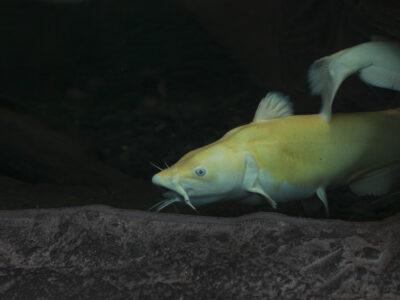
Blue Catfish
It's a strong fighter when caught on a fishing line
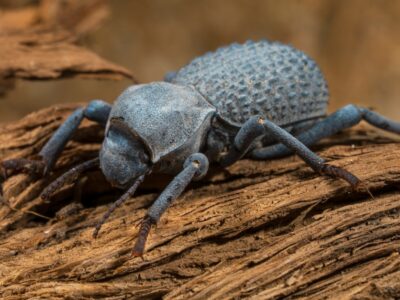
Blue Death Feigning Beetle
When threatened, blue death feigning beetles will pretend like they’re dead.
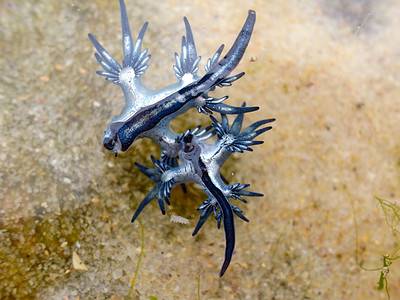
Blue Dragon Sea Slug
They inflict a painful, venomous sting

Blue Gray Gnatcatcher
Joy and happiness are the spiritual meaning of this bird.
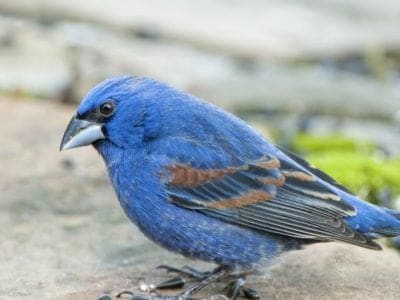
Blue grosbeak
Blue grosbeak parents take off the head, legs and wings of an insect before feeding it to their baby.

Blue Tanager (Blue-Grey Tanager)
They travel and forage in pairs or groups
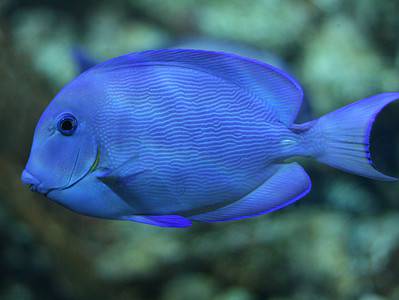
Blue Tang
One of the most colorful members of the genus Acanthurus
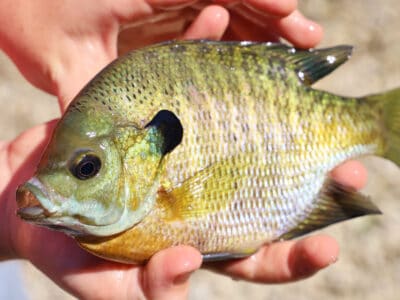
Bluegill
The world record for longest bluegill is 15 inches.
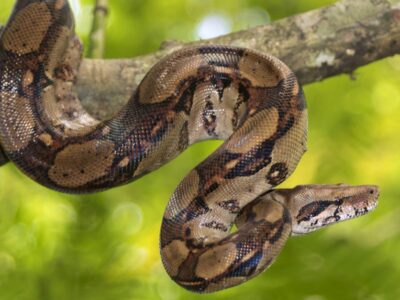
Boas
Boas are considered primitive snakes and still have vestigial legs, called spurs.
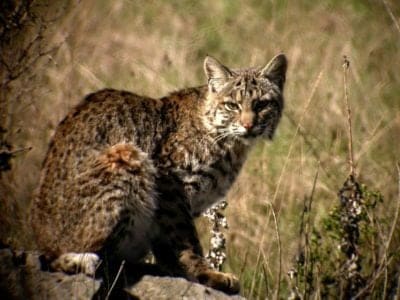
Bobcat
About double the size of a domestic cat!
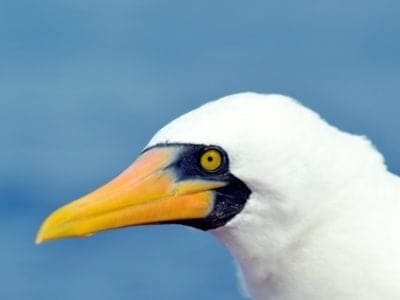
Booby
Seabirds found across the South Pacific!

Bowfin
The bowfin is a primitive fish that first evolved in the Jurassic
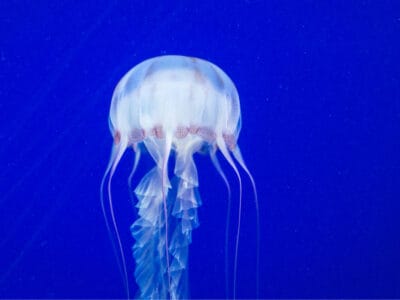
Box Jellyfish
Venomous marine animals
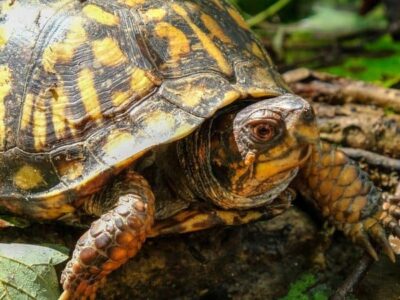
Box Turtle
This reptile has an S-shaped neck allowing it to pull its entire head into its shell.
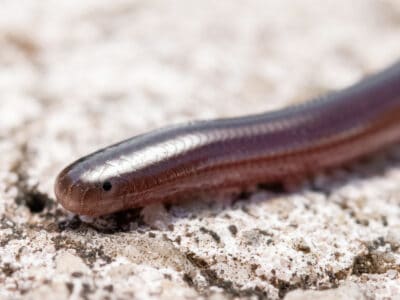
Brahminy Blindsnake
These snakes have been introduced to all continents, except Antarctica!
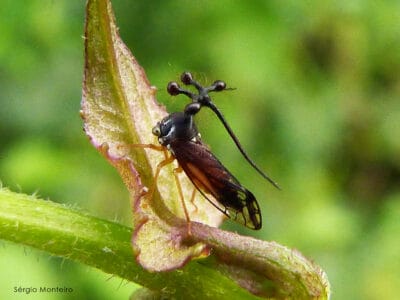
Brazilian Treehopper
“Mild-Mannered Minimonsters”

Brown Dog Tick
Can live its entire life indoors
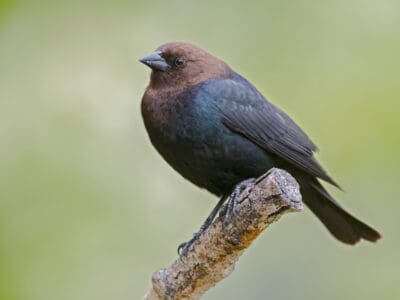
Brown Headed Cowbird
Males are generally monogamous during mating season and will protect the female from other males. However, females tend to venture from their partners and mate with other males.
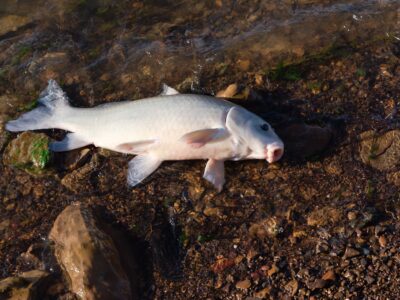
Buffalo Fish
The oldest Buffalo fish recorded was 112 years old!
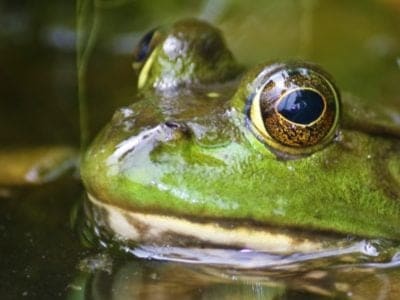
Bullfrog
Has loud cow-like calls!
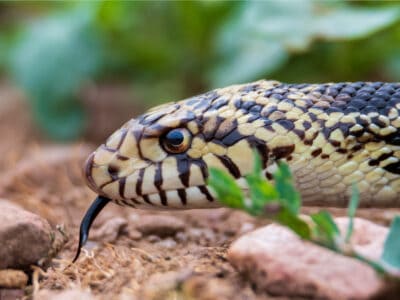
Bullsnake
Considered “The farmer’s friend” because it eats mice and other vermin.
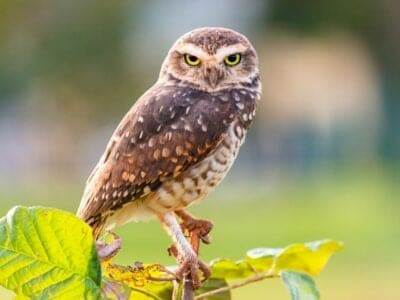
Burrowing Owl
The burrowing owl lives in underground burrows

Butterfly
There are thought to be up 17,500 species!
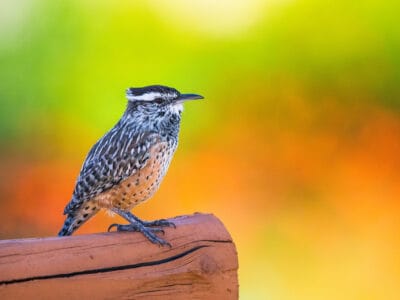
Cactus Wren
It is the largest wren in the United States
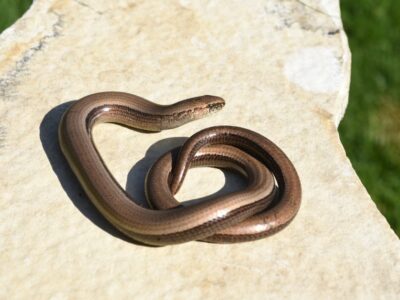
Caecilian
Some species' babies use their hooked or scraper-like teeth to peel off and eat their mother's skin
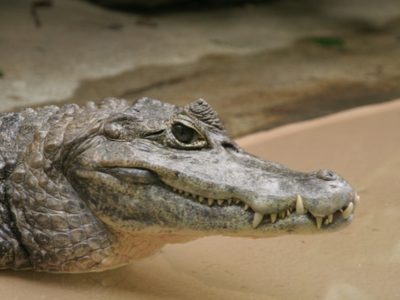
Caiman
Can grow to up 6 meters long!
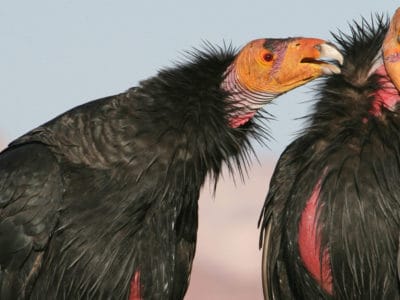
California Condor
They are the largest bird in North America
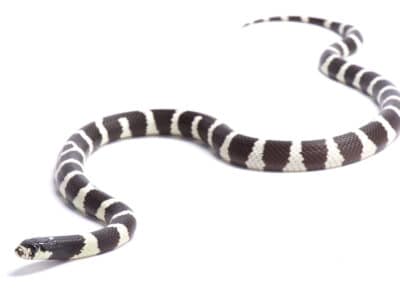
California Kingsnake
A full-grown California kingsnake can be about 3.5 feet long, though there are some cases in Mexico of the snake being almost twice this size.
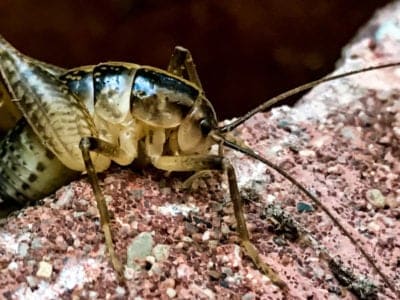
Camel Cricket
The camel crickets that are found in the USA are light brown in color. They also have dark streaks all over their body.
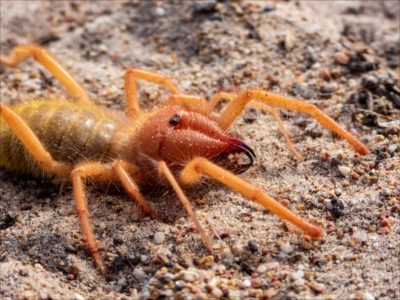
Camel Spider
Fast, carnivorous arachnid with a painful bite.
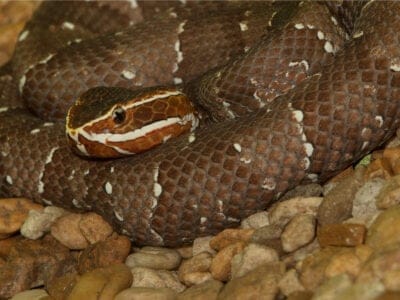
Cantil
Cantils heads are marked with bright white lines on each side of their heads.
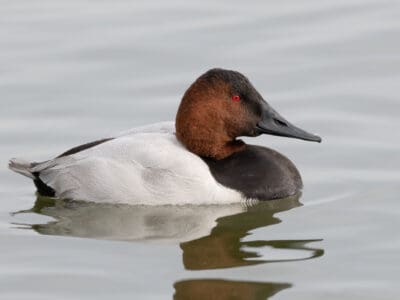
Canvasback
They're the largest diving duck in North America!
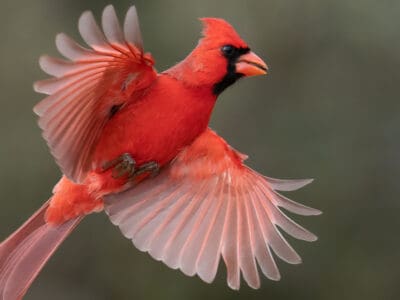
Cardinal
There are 14 genera and 53 species in the cardinal family

Carpenter Ant
Carpenter ants can lift up to seven times their own weight with their teeth!

Cat
May have been domesticated up to 10,000 years ago.
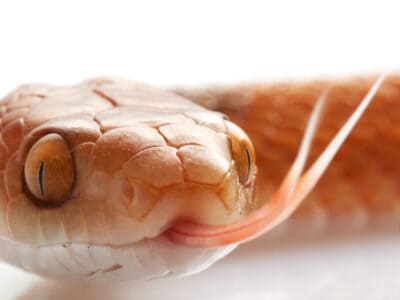
Cat-Eyed Snake
Evidence indicates that females can delay fertilization and store sperm for later years to produce eggs even in the absence of contact with a male!

Caterpillar
The larvae of a moth or butterfly!

Catfish
There are nearly 3,000 different species!

Cedar Waxwing
Their feathers have red, waxy tips that can be hard to identify unless you’re up close.

Centipede
There are about 3,000 documented species!

Checkered Garter Snake
It has the ability to expel a stinky liquid from its body as a way to make predators (and humans) retreat!
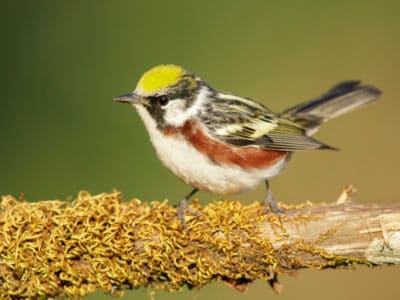
Chestnut-Sided Warbler
They inhabit regrowing forests
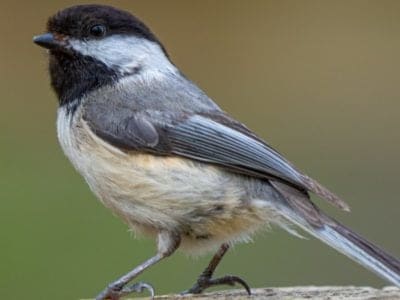
Chickadee
Chickadees are named for the sound they make: Chick-a-dee-dee-dee-dee-dee!

Chicken
First domesticated more than 10,000 years ago!
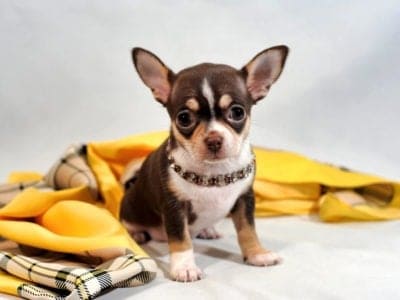
Chihuahua
Curious and devoted personality!

Cichlid
There are more than 2 000 known species!
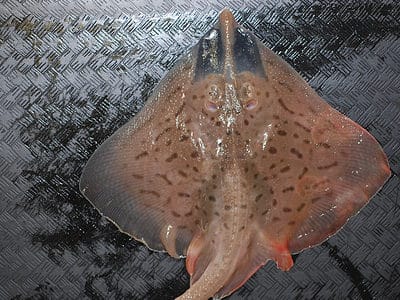
Clearnose Skate
The skate with translucent nose patches
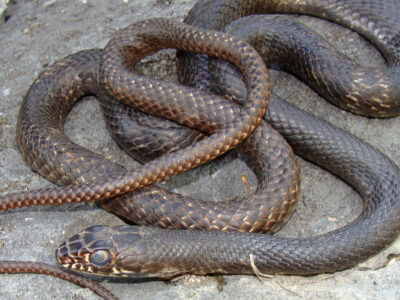
Coachwhip Snake
Coachwhip snakes pose little danger to people
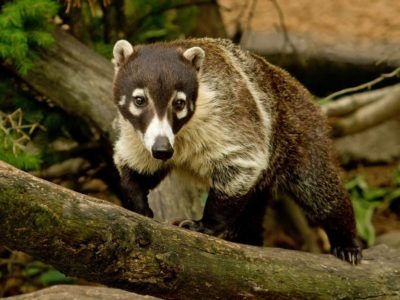
Coati
Found in dense forests and wet jungles!

Cockroach
Dated to be around 300 million years old!

Codling Moth
Pupae are able to undergo diapause to survive poor fruit yield years and winter.
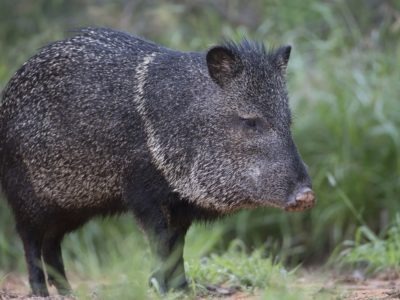
Collared Peccary
Form bands of up to 12 individuals!

Common Furniture Beetle
The common furniture beetle feeds exclusively on wood
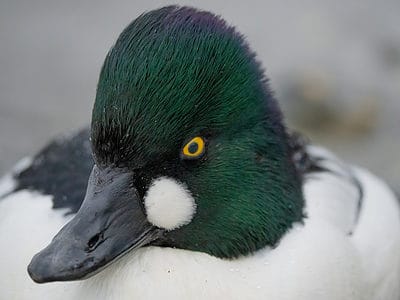
Common Goldeneye
They're known as whistlers because of the sound of the wind in their feathers.

Common Grackle
Common grackles are a pest species that damage crops and spread disease.

Common House Spider
House spiders have the ability to eat most insects in a home.

Common Raven
A group of ravens is called an unkindness or a conspiracy.
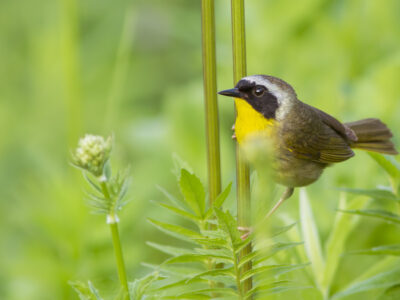
Common Yellowthroat
The Common Yellowthroat stays close to the ground and uses stealth to survive!
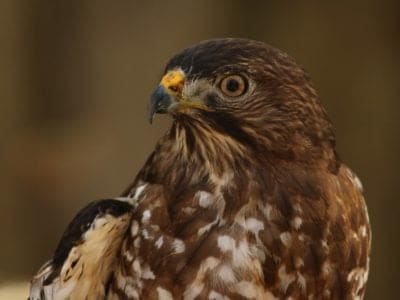
Cooper’s Hawk
Eyes change color as they age
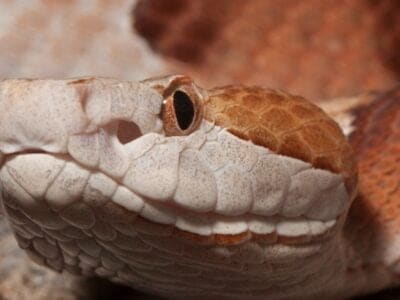
Copperhead
Copperheads get their name, unsurprisingly, from their bronze-hued heads.
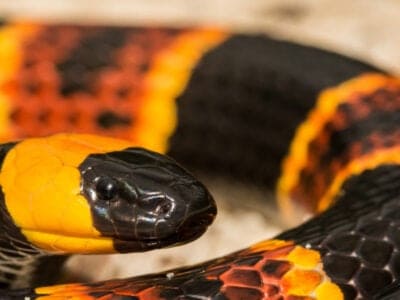
Coral Snake
There are over 80 species of coral snake worldwide.
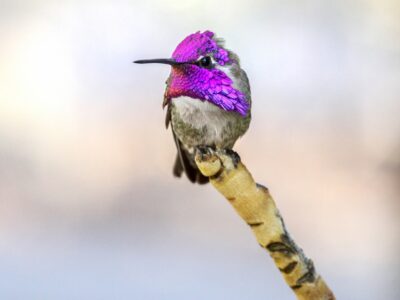
Costa’s Hummingbird
Costa's Hummingbird males have iridescent purple feathers on their heads and necks.
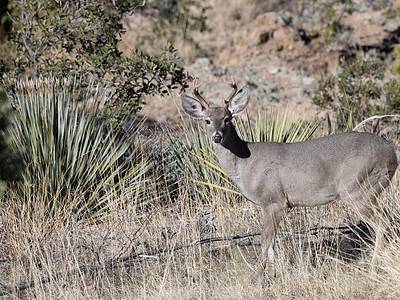
Coues Deer
Coues deer are smaller than other white-tail deer, following Bergmann's Rule that average size is greater for animals farther from the equator.

Cow
There are nearly 1.5 billion worldwide!
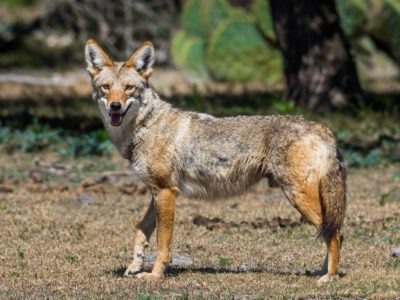
Coyote
Also known as the Prairie Wolf!

Crab
There are 93 different crab groups

Crab Spider
Crab Spiders can mimic ants or bird droppings

Cricket
Male crickets can produce sounds by rubbing their wings together
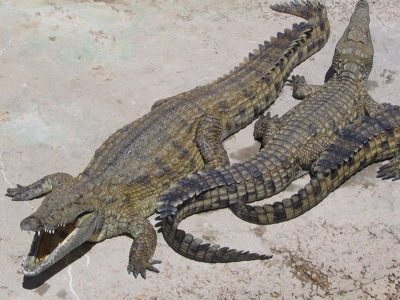
Crocodile
Have changed little in 200 million years!

Crocodylomorph
Crocodylomorphs include extinct ancient species as well as 26 living species today.

Crow
A group of these birds is called a Murder.

Cucumber Beetle
Adults cucumber beetles cause the most damage to cucurbit plants.
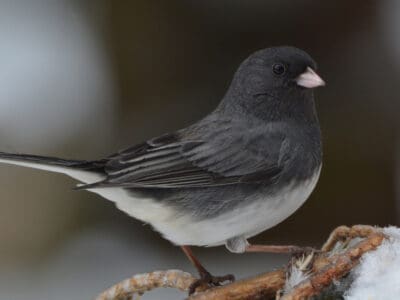
Dark-Eyed Junco
They are called snowbirds because many subspecies reappear in the winter.
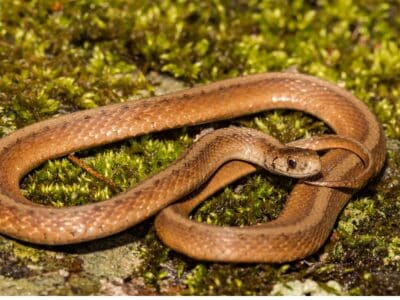
De Kay’s Brown Snake
They have specialized jaws for removing snails from shells.
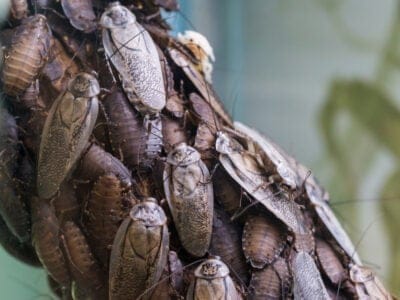
Death’s Head Cockroach
People buy Death's Head Cockroach nymphs and raise them as pets!

Deer Head Chihuahua
The Chihuahua is the smallest dog breed in the world.

Deer Mouse
Roughly 60 different species of deer mice range from Canada to Central America!
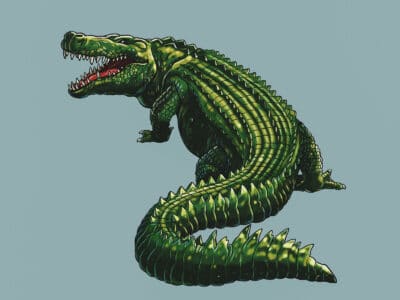
Deinosuchus
Deinosuchus was probably the biggest crocodilian that ever lived
Desert Tortoise
Lives in burrows underground!
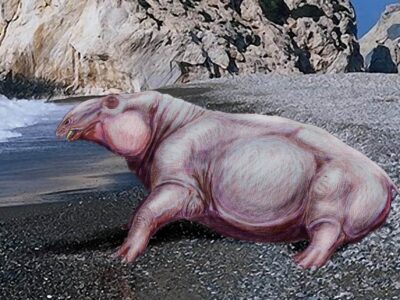
Desmostylus
Desmostylus has no living descendant.
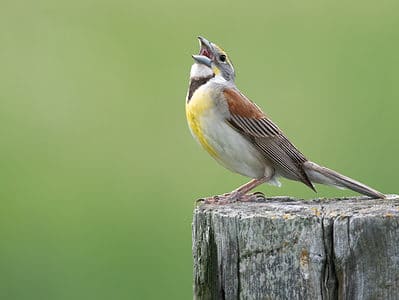
Dickcissel
They have a unique call that they are named for.
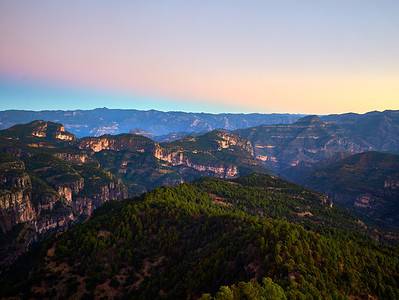
Diminutive Woodrat
The presence of a Nelsonia tail in a tree indicates that these woodrats may be arboreal at times.

Dog
First domesticated in South-East Asia!

Dog Tick
Dog ticks feed on dogs and other mammals

Donkey
First domesticated 5,000 years ago!

Dragonfly
It's larvae are carnivorous!
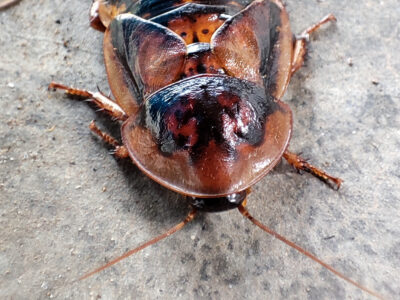
Dubia Cockroach
The most popular species of feeder roach

Duck
Rows of tiny plates line their teeth!

Dung Beetle
The dung beetle can push objects many times its own weight
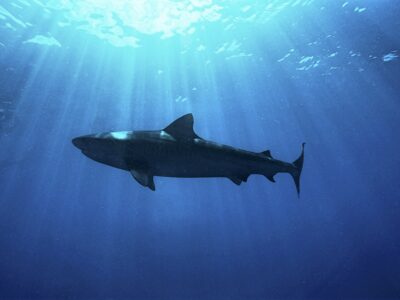
Dusky Shark
The Dusky Shark sometimes eats trash discarded by humans.
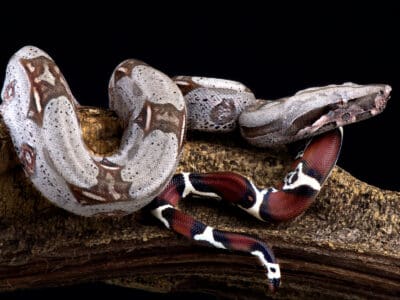
Dwarf Boa
Some species can change color from dark to light, and back again.
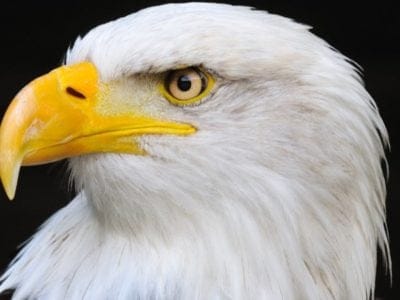
Eagle
Has exceptional eyesight!

Earthworm
They are hermaphrodites, which means they have male and female organs

Earwig
There are nearly 2,000 different species!

Eastern Bluebird
Bluebirds drop straight down on their prey from their perch, much like leopards.
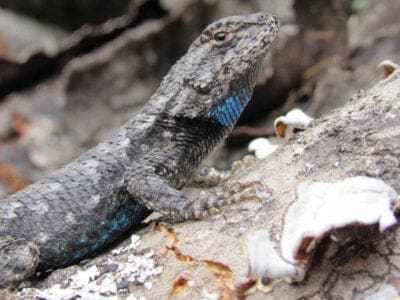
Eastern Fence Lizard
Females are usually larger than males.
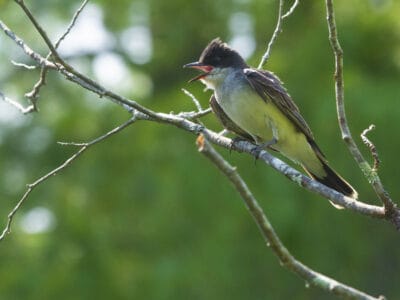
Eastern Kingbird
The eastern kingbird is a fierce fighter once known as the butcher king!

Eastern Meadowlark
They can live up to 9 years.
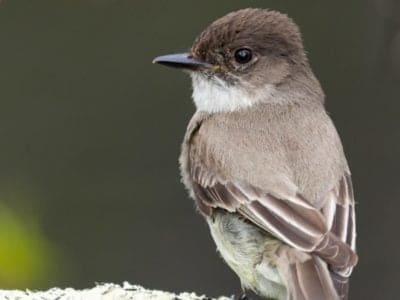
Eastern Phoebe
This passerine bird can sing its song without ever hearing another bird vocalize first.

Eastern Racer
Fast and Furious!
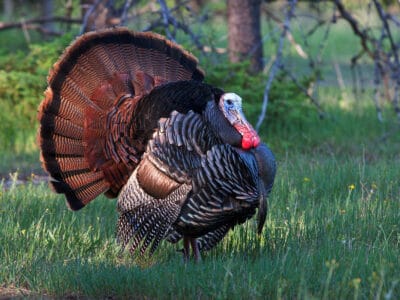
Eastern Turkey (Wild Turkey)
You can hear their gobbles up to a mile away!

Eel
Eels can be a mere few inches long to 13 feet!

Elegant Tern
Have a lifespan of 20 years or more
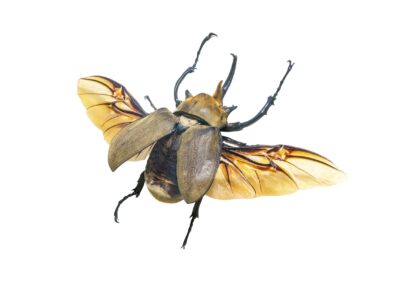
Elephant Beetle
The males have multiple horns at the front of their bodies.

Elf Owl
The elf owl is the smallest and lightest owl in the world
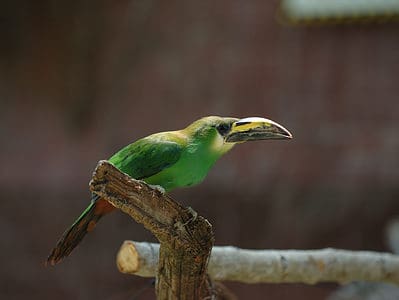
Emerald Toucanet
Emerald Toucanets spend their lives high in the canopy of tall forests, almost never coming to the ground!

European Starling
European starlings are accomplished mimics, often copying songs or sounds of other birds and animals (frog calls, goats, cats), or even mechanical sounds and human speech!
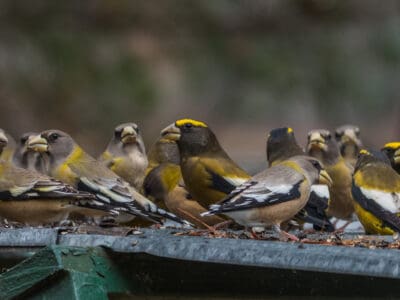
Evening Grosbeak
They are friendly and non-aggressive to those in their species.

Executioner Wasp
The Executioner Wasp's sting is one of the most painful in the world.
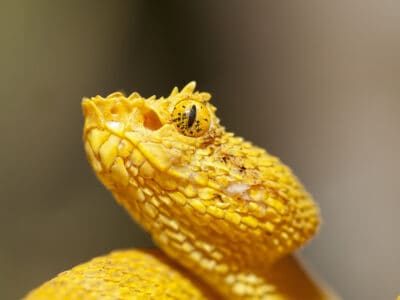
Eyelash Viper
While the eyelash viper can be a pet, be cautious – they are extremely venomous!

Falcon
The fastest creatures on the planet!

False Widow Spider
False spiders actually prey on black widow spiders and other hazardous spiders
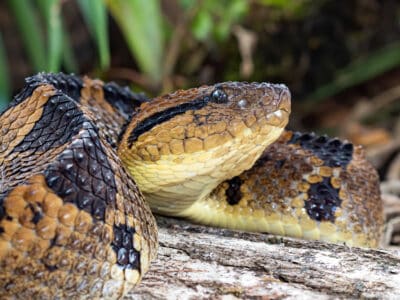
Fer-de-lance Snake
The Most Dangerous Snake in the Americas
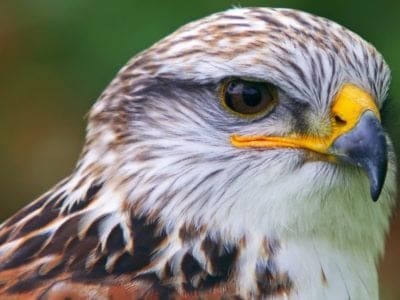
Ferruginous Hawk
The ferruginous hawk comes in both light and dark morphs
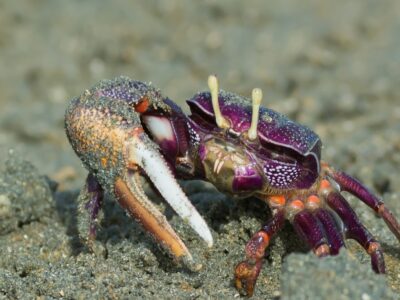
Fiddler Crab
The fiddler crab gets its name from the motion the males make with their over-sized claw during the mating ritual.
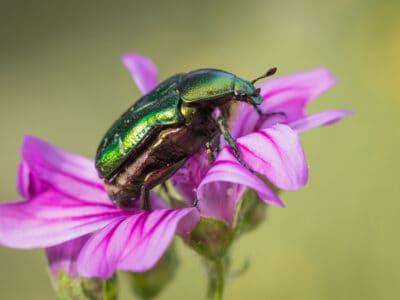
Figeater Beetle
Figeater beetles only open their wings partially when they fly.

Firefly
The firefly produces some of the most efficient light in the world
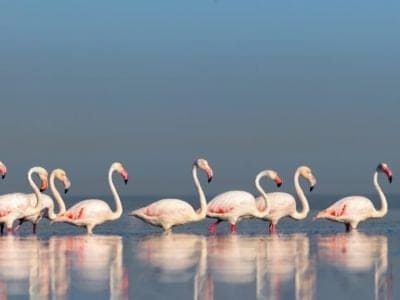
Flamingo
Sleeps on just one leg!
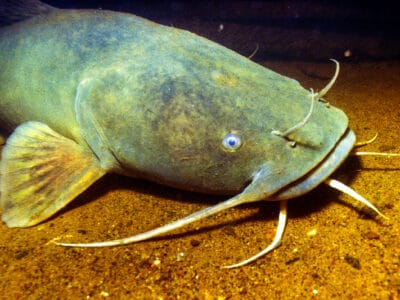
Flathead Catfish
The only predators that prey on flathead catfish are members of their own species and humans who catch them for commercial and recreational purposes.

Flea
Adult fleas can jump up to 7 inches in the air

Fly
There are more than 240,000 different species!
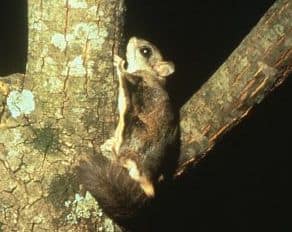
Flying Squirrel
Can glide up to 90 meters!
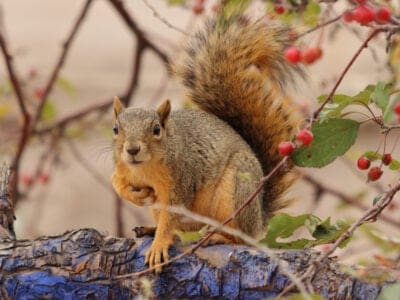
Fox Squirrel
Although it is a tree squirrel, it spends most of its time on the ground.

Frog
There are around 7,000 different species!

Fruit Fly
Fruit flies are among the most common research animals in the world
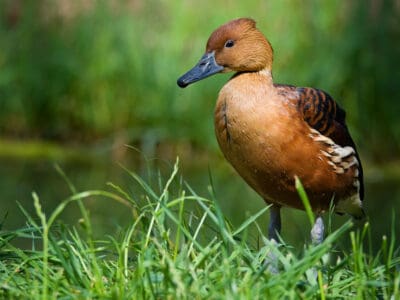
Fulvous Whistling Duck
They build a ramp from their nest, which leads to a nearby water source
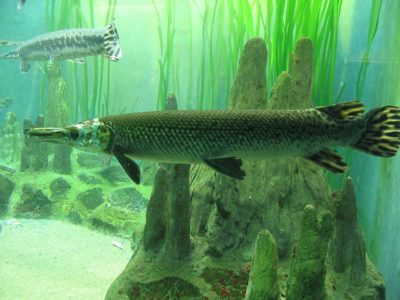
Gar
Can grow to more than 3m long!
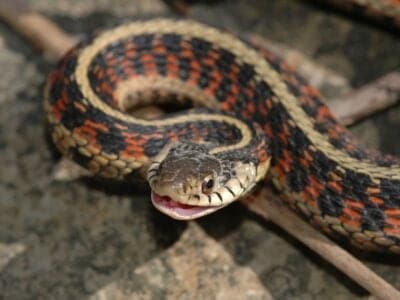
Garter Snake
Female garter snakes give birth to live young rather than laying eggs!
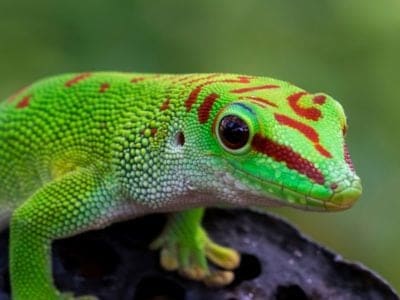
Gecko
There are thought to be over 2,000 species!

German Cockroach
The most common type of urban roach
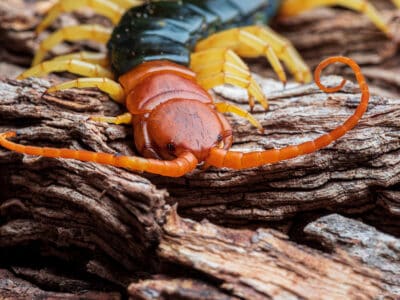
Giant Desert Centipede
They are the largest centipede in North America
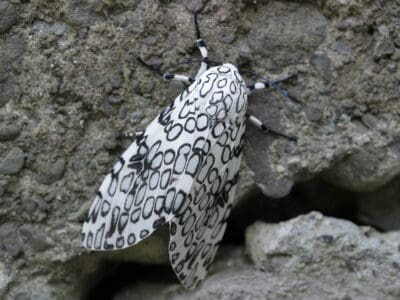
Giant Leopard Moth
When giant leopard moths mate, their mating sessions last over 24 hours.

Glowworm
Found inhabiting dense woodland and caves!

Gnat
Males form large mating swarms at dusk
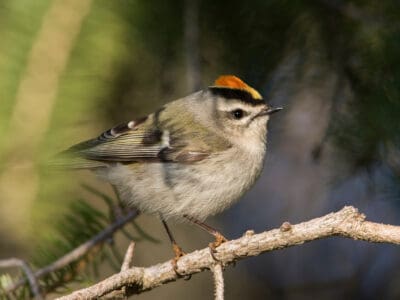
Golden-Crowned Kinglet
They huddle together for warmth
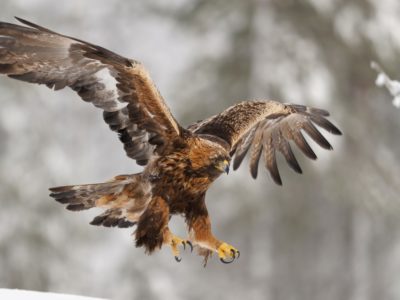
Golden Eagle
Their calls sound like high-pitched screams, but they are quiet most of the time.
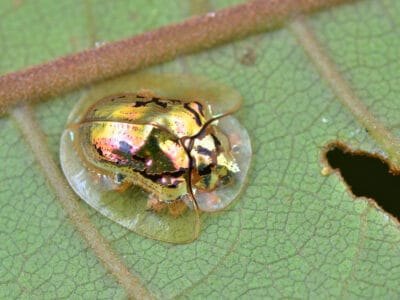
Golden Tortoise Beetle
Golden tortoise beetles have a metallic gold color which can change to dull brown when disturbed.

Goliath Grouper
Massive reef fish with a strong tail

Gopher
They dig large networks of tunnels!
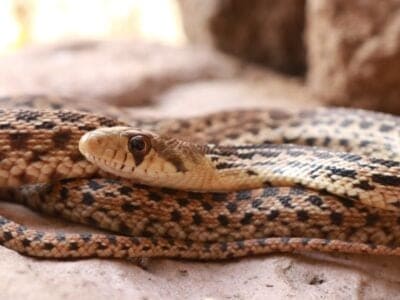
Gopher Snake
Gopher snakes can reach up to 9 feet long.
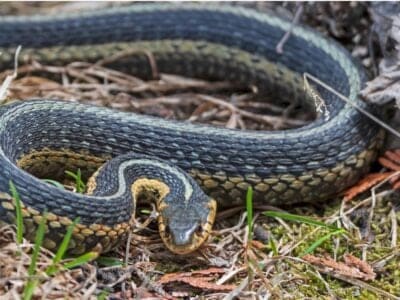
Grass Snake
Use acute hearing to hunt
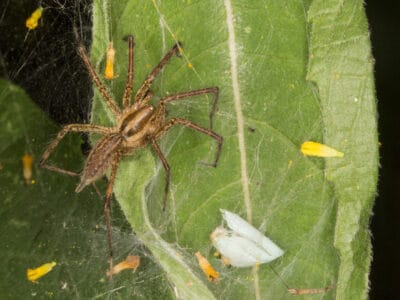
Grass Spider
Their fangs aren't big enough to penetrate human skin.

Grasshopper
There are 11,000 known species!

Grasshopper Mouse
The grasshopper mice attack predators using the poison of their venom.
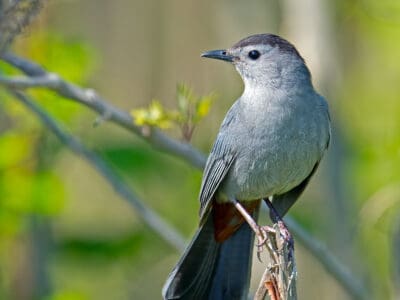
Gray Catbird
Their songs have cat-like qualities and can mimic other birds and animals, like tree frogs.
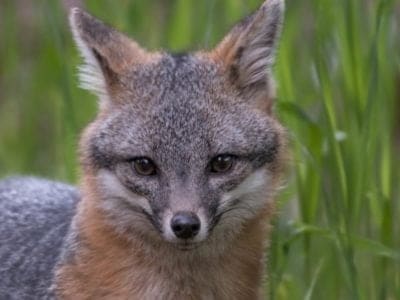
Gray Fox
The gray fox has retractable claws and a rotating wrist that allow it to climb trees with some proficiency

Great Blue Heron
Their wingspan is larger than an eagle’s; both males and females help hatch the eggs; rich in symbolism
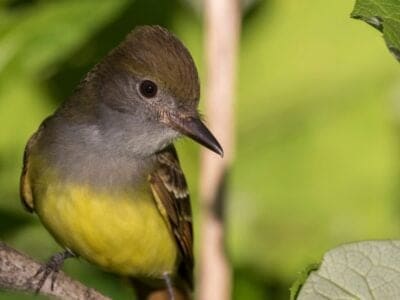
Great Crested Flycatcher
This species makes use of some truly unusual nesting material, including snakeskin and garbage
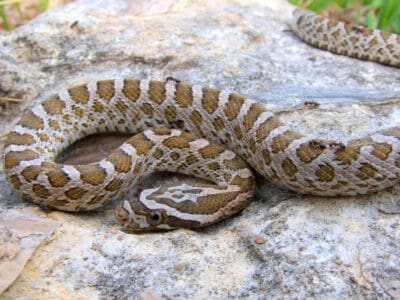
Great Plains Rat Snake
This snake vigorously shakes its tail as a way to frighten away predators.

Great Potoo Bird
At night, they make a terrifying low call that sounds like a distressed moan or growl.

Green Snake
There are two types of green snakes: smooth green snakes and rough green snakes
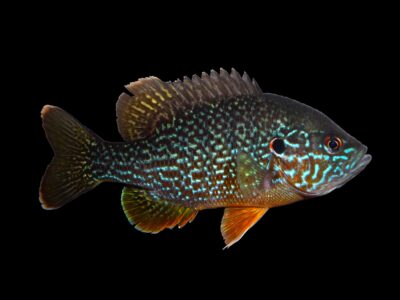
Green Sunfish
Juvenile Green Sunfish are less colorful than their parents because they need to blend in with their surroundings to avoid predators.
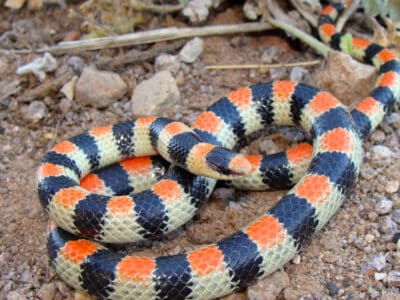
Ground Snake
It’s sometimes called a miter snake due to the marking on its head that looks like a bishop’s miter

Grunion
Their whole bodies are edible

Guppy
Also known as the Millionfish!
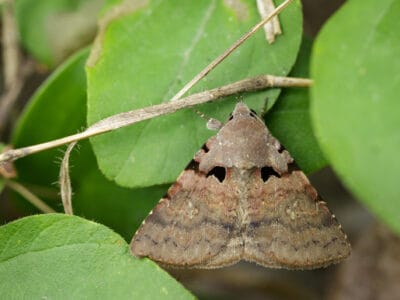
Gypsy Moth
One of the most invasive species in the world

Hairy Woodpecker
They are natural pest controls

Hammond’s flycatcher
“Hammond’s flycatcher has a call known as a sharp peek!”

Hamster
Able to run as quickly backwards as forwards!

Hare
Can reach speeds of over 50 mph!
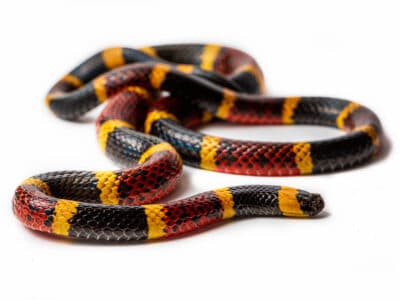
Harlequin Coral Snake
Red touches yellow kills a fellow, red touches black a friend of Jack.
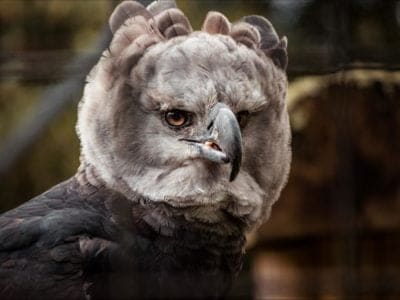
Harpy Eagle
Talon's the size of a grizzly bear's claws!
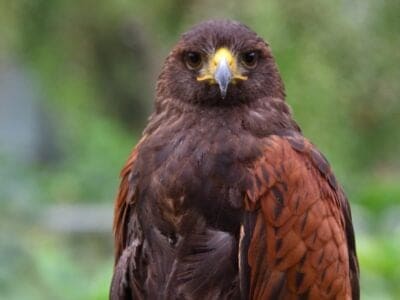
Harris’s Hawk
Their vision is eight times better than a human's

Hawk Moth Caterpillar
Many hawk moth caterpillars eat toxins from plants, but don’t sequester them the way milkweed butterflies do. Most toxins are excreted.
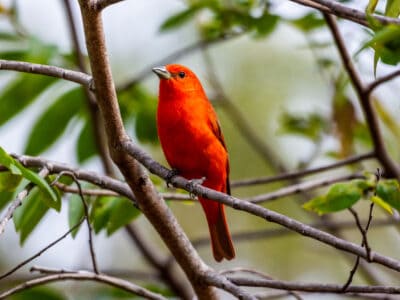
Hepatic Tanager (Red Tanager)
Parents and their young sing sweetly to each other

Hercules Beetle
This dynastine scarab beetle makes a weird huffing sound when it’s disturbed.

Heron
Inhabits wetlands around the world!

Herring Gull
They are loud, spirited birds with raucous cries that sound like bursts of laughter.
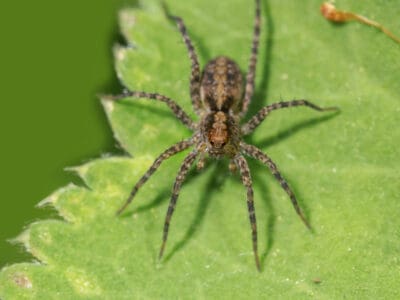
Hobo Spider
The Hobo Spider travels city to city like an actual Hobo and is often found near railroad tracks!

Hogfish
Hogfish can change their sex from female to male
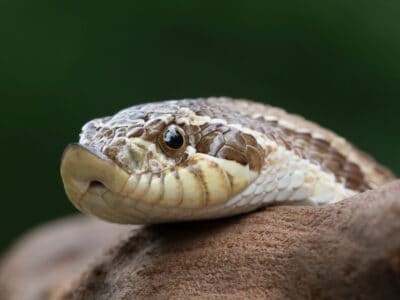
Hognose snake
Prima Donnas of the Snake World

Honey Bee
There are only 8 recognized species!

Hooded Oriole
Hooded orioles have a strong sweet tooth that makes nectar and jelly among its favorite foods.

Horned Lizard
The horned lizards are able to squirt blood from their eyes.

Horse
Has evolved over 50 million years!

Horsefly
Horseflies have been seen performing Immelmann turns, much like fighter jets.
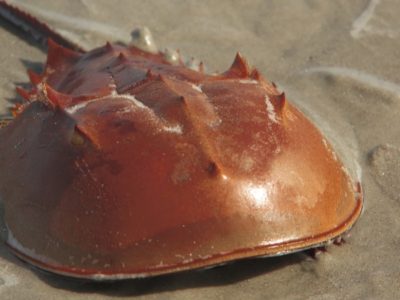
Horseshoe Crab
Changed little in over 500 million years!
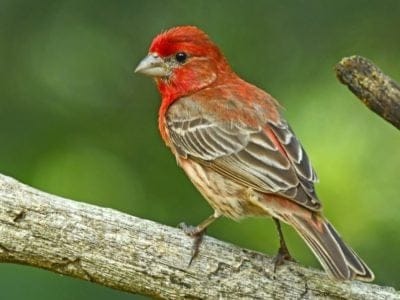
House Finch
The house finch can become redder depending on what it eats

House wren
The wren’s epithet, aedon, comes from a Greek queen who accidentally killed her only son. She was actually aiming for her nephew, and Zeus took pity on her and turned her into a nightingale.

Housefly
The fly has no teeth

Human
Thought to have orignated 200,000 years ago!
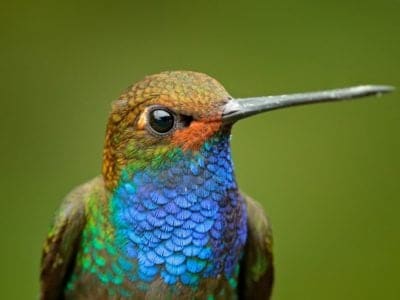
Hummingbird
Beat their wings up to 80 times per second!

Huntsman Spider
Some huntsman spiders have an interesting way of moving around. Some cartwheel while others do handsprings or backflips.

Ibis
Found in swamps, marshes and wetlands!
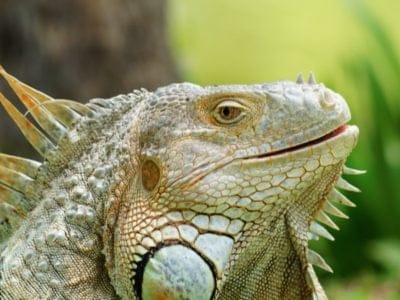
Iguana
Uses visual signals to communicate!
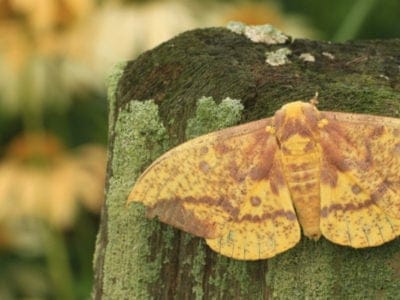
Imperial Moth
Since the imperial moth doesn’t eat, it does die shortly after it lays its eggs. Its lifespan is only about one week.
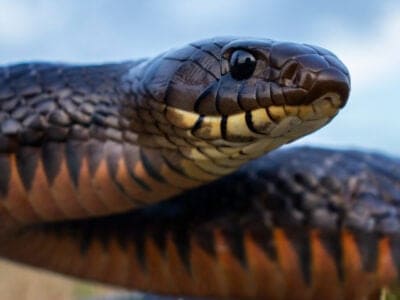
Indigo Snake
Indigo snakes use brute force to overpower their prey.

Insects
There are an estimated 30 million species!
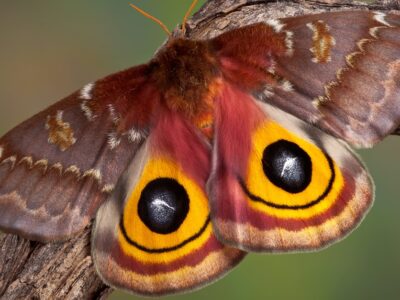
Io Moth
The larvae of the Io Moth has a poisonous and painful sting.

Jabiru
They form lifelong pair bonds and live in groups near water sources.

Jacana
The jacana has the ability to swim underwater
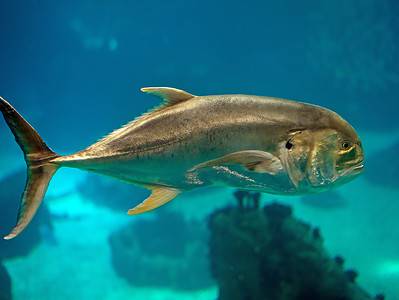
Jack Crevalle
One of the biggest species in the Caranx genus
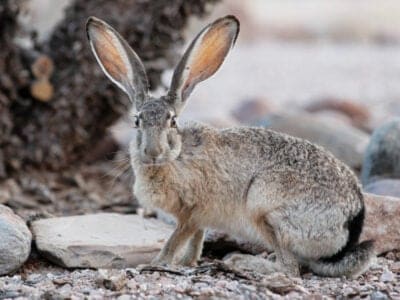
Jackrabbit
They can run as fast as 45 mph.
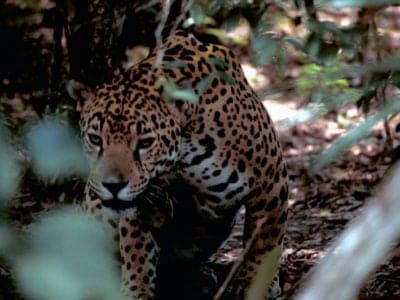
Jaguar
The largest feline on the American continent!
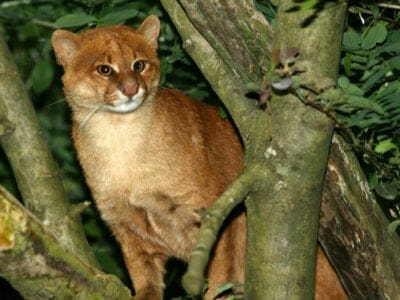
Jaguarundi Cat
These cats are expert swimmers.

Jumping Spider
Some can jump 50 times the length of their bodies
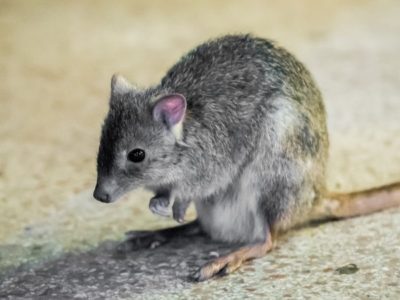
Kangaroo Rat
Merriam’s kangaroo rats literally never have to drink water
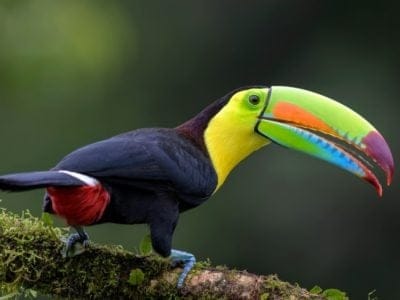
Keel-Billed Toucan
It's beak can reach nearly 20 cm long!

Kentucky Warbler
The Kentucky Warbler appears to wear bright yellow cat-eye glasses!
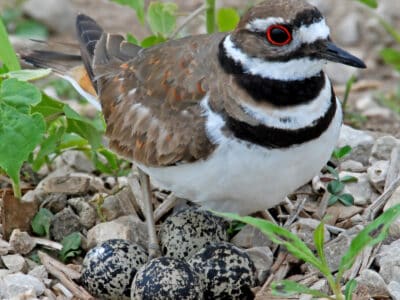
Killdeer
The killdeer feigns injury to draw a predator away from its nest.
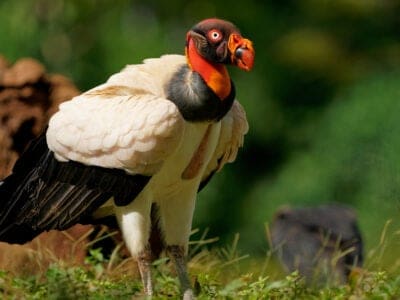
King Vulture
The king vulture is the second largest New World vulture species

Kingfisher
Inhabits wetlands and woodlands worldwide!
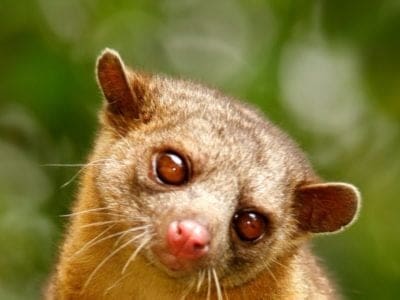
Kinkajou
The kinkajou is a nimble forest-dwelling mammal of Central and South America.
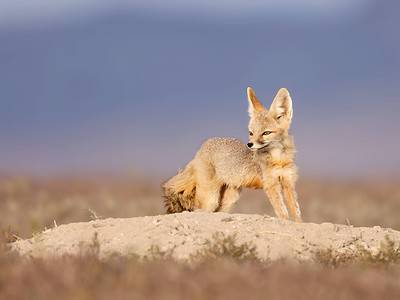
Kit Fox
The kit fox is the smallest canid in North America.

Ladybug
There are more than 5,000 species worldwide!

Largemouth Bass
Georgia, Mississippi, Alabama, and Florida all claim the largemouth bass as the state fish or state freshwater fish.
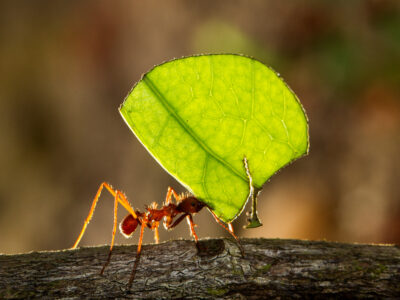
Leafcutter Ant
Leafcutter ants have been farming fungus under the forest floor for up to 50 million years!
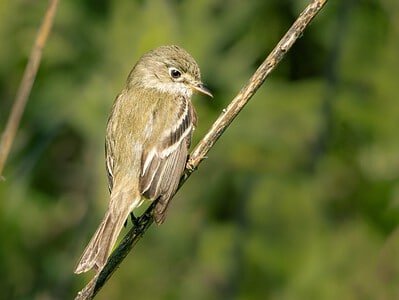
Least Flycatcher
They can travel up to 72 miles in a single day.

Leech
Has 10 pairs of eyes!
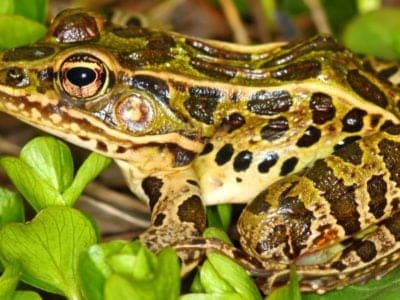
Leopard Frog
They can jump up to three feet

Leopard Lizard
Can jump a distance of two feet to capture prey

Lesser Scaup
Young lesser scaups learn to dive as soon as their down dries.

Lizard
There are around 5,000 different species!
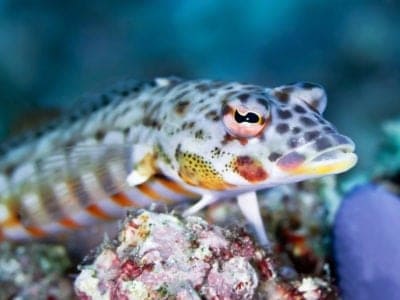
Lizardfish
The lizardfish can camouflage itself against the sandy bottom to avoid predators.

Locust
Each locust can eat its weight in plants each day.

Loggerhead Shrike
Its nickname is the butcherbird!
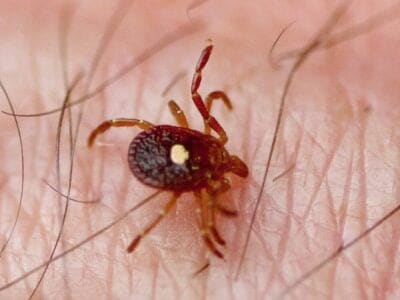
Lone Star Tick
Only females have the ‘lone star’ marking
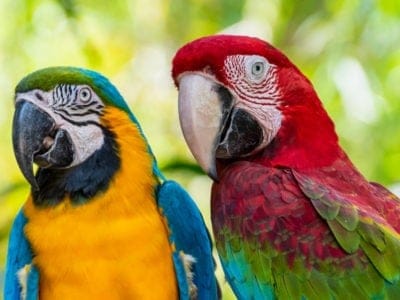
Macaw
The largest species of parrot in the world!
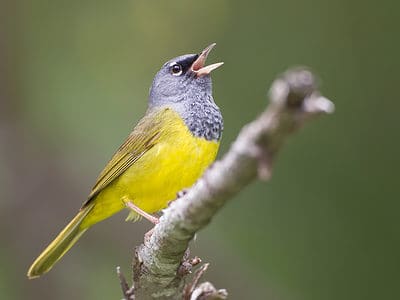
MacGillivray’s Warbler
The complicated story of how MacGillivray’s Warblers got their name involves three ornithologists, a physician and a compromise.
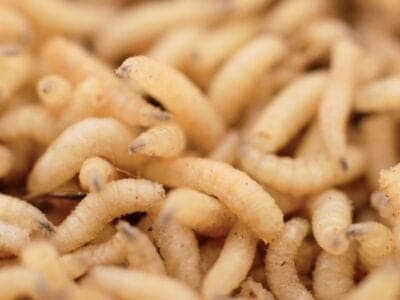
Maggot
Will only live in wet areas

Magnolia Warbler
They line their nests with fungi strands
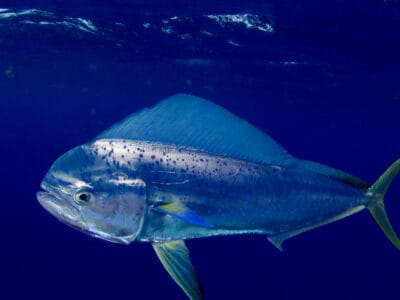
Mahi Mahi (Dolphin Fish)
It's called the rabbit of the ocean because it multiplies so quickly.
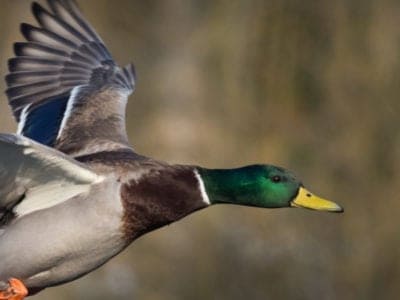
Mallard
With an appropriate tail wind, the mallard can travel hundreds of miles a day
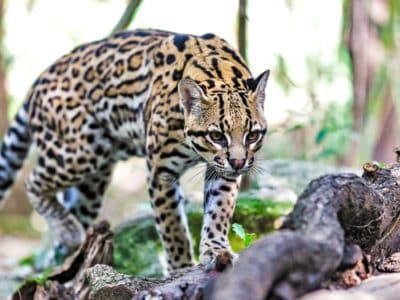
Margay
Margays are one of the world’s most highly adapted cat species for climbing trees!
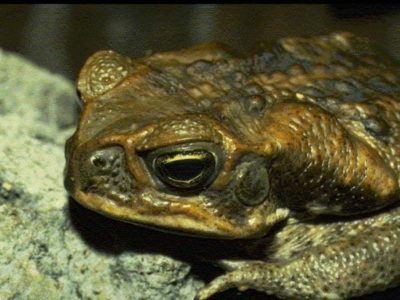
Marine Toad
Produces a toxin used in arrow darts!
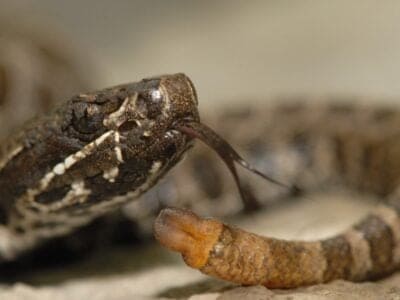
Massasauga
The name “Massasauga” comes from the Chippewa language, meaning “Great River Mouth”.

May Beetle
May Beetles are also known as June Bugs Because they’re more active during the month of June
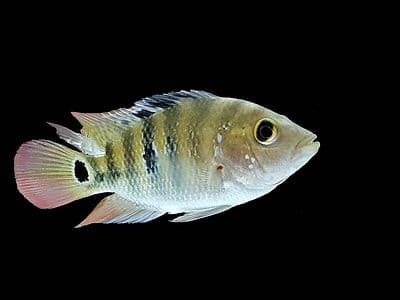
Mayan Cichlid
Mayan cichlids live longer in captivity than they do in the wild.

Mayfly
There are 2,500 known species worldwide!

Mealybug
They have a symbiotic relationship with ants.
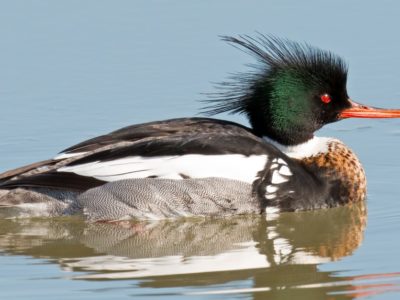
Merganser
They line their nests with their feathers
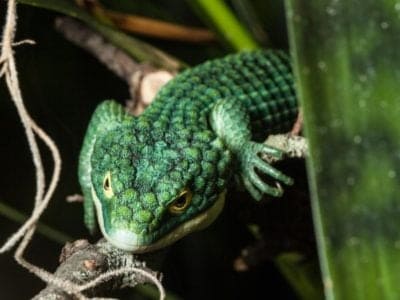
Mexican Alligator Lizard
Mexican alligator lizards shed their skin like snakes.
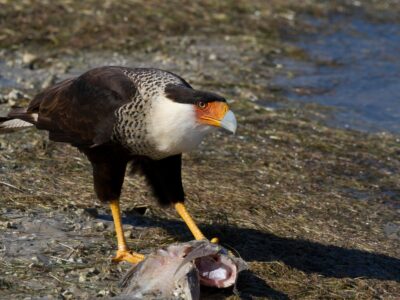
Mexican Eagle (Northern crested caracara)
The northern crested caracara mates for life with its partner
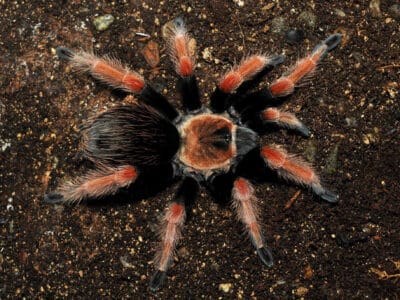
Mexican Fireleg Tarantula
Mexican fireleg tarantulas have bright reddish-orange legs.

Mexican Free-Tailed Bat
Some colonies have millions of bats

Mexican Mole Lizard
They can break off part of their tail, but it will not grow back.

Millipede
Some species have a poisonous bite!

Mockingbird
Mockingbirds are incredible mimics that can learn hundreds of songs!
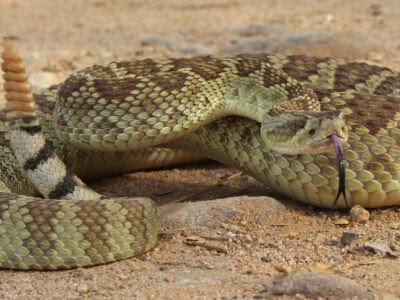
Mojave Rattlesnake
"The Mojave rattlesnake is the most venomous rattlesnake in the world."

Mole
Primarily hunts and feeds on Earthworms!

Mole Cricket
Adult Mole crickets may fly as far as 5 miles during mating season and are active most of the year.
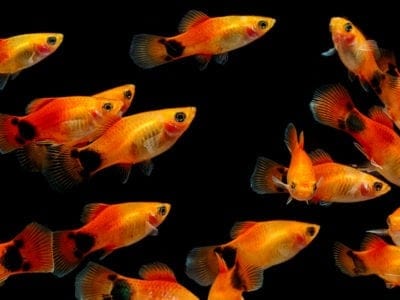
Molly
Known for their calm and peaceful nature!

Monarch Butterfly
During migration, Monarch Butterflies may travel 250 or more miles each day.

Mongrel
Has characteristics of two or more breeds!

Monkey
There are around 260 known species!
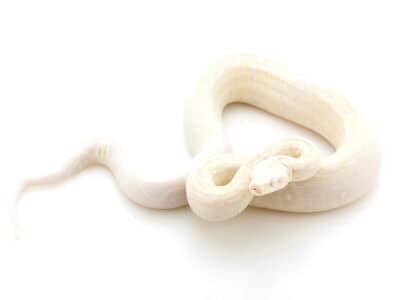
Moonglow Boa
Moonglow boas are the result of mixing three genetic traits.

Moorhen
Feeds on aquatic insects and water-spiders!
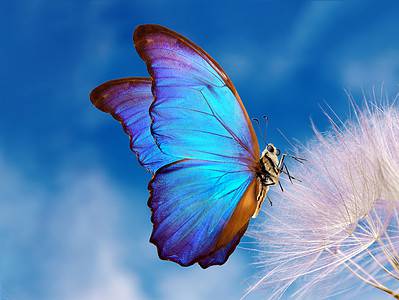
Morpho Butterfly
Collectors prize them for their bright wings

Mosquito
Only the female mosquito actually sucks blood

Moth
There are 250,000 different species!
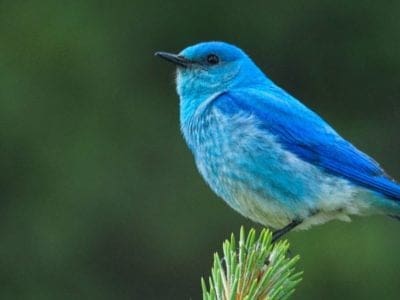
Mountain Bluebird
Depending on the time of the year, the mountain bird can live as far north as Alaska.

Mountain Lion
Has no real natural predators!
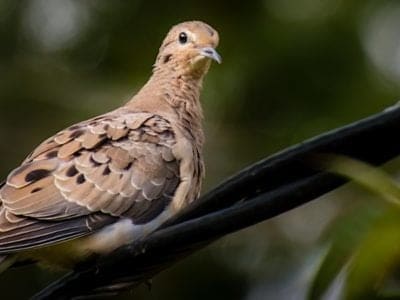
Mourning Dove
It is almost always the male who makes the famous sad sound, which is a wooing call
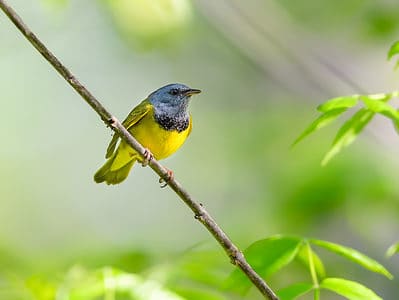
Mourning Warbler
The Mourning Warbler was named for its gray head, which resembles a mourning veil!

Mouse
Found on every continent on Earth!

Mule
The offspring of a horse and donkey parents!
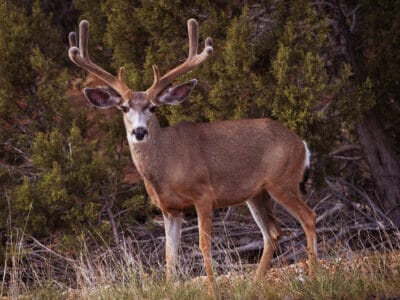
Mule Deer
Mule deer can run up to 45 miles per hour.
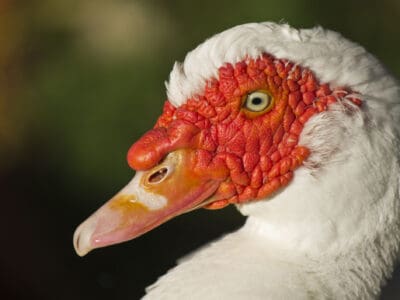
Muscovy Duck
Unlike most duck species, the Muscovy is silent and only makes noise when excited or threatened.
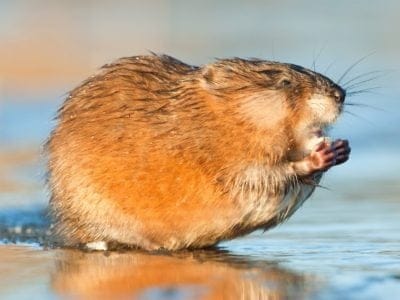
Muskrat
The muskrat can stay underwater up to 17 minutes at a time
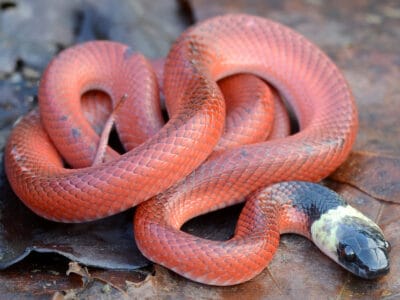
Mussurana Snake
Mussurana snakes help keep rodents from overrunning farms.
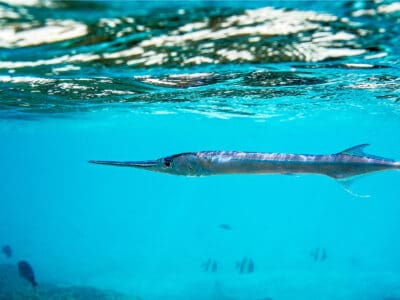
Needlefish
no stomach to digest food

Nematode
Nematodes range in size from 1/10 of an inch to 28 feet long

No See Ums
There are more than 5,000 species.
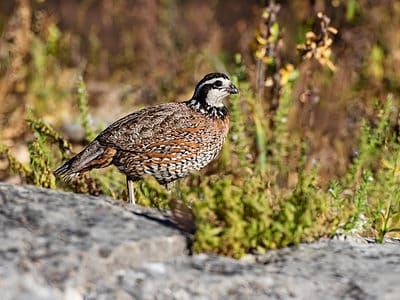
Northern Bobwhite
The northern bobwhite is named for its distinctive whistling call that sounds like ‘bob-white’.
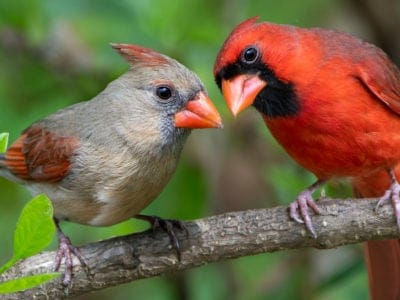
Northern Cardinal
Males are a bright red color, also called "cardinal red"
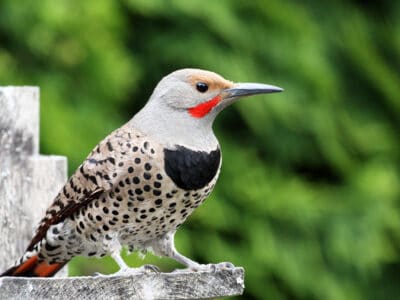
Northern Flicker
Northern Flickers often make their homes in dead trees.
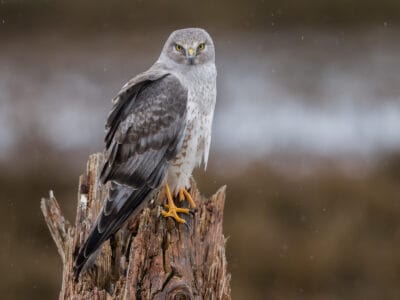
Northern Harrier
They can reach speeds of 25 Mph but prefer to soar low and slow.
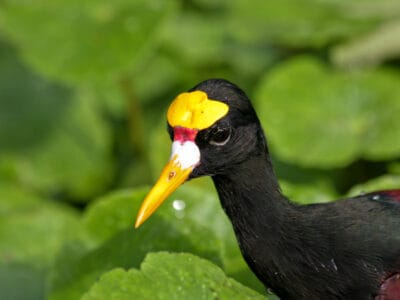
Northern Jacana
The northern jacana is one of two species found in the Americas, from the United States to Panama.
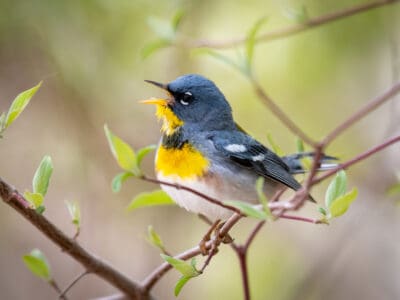
Northern Parula
They live in coffee and citrus plantations during the winter
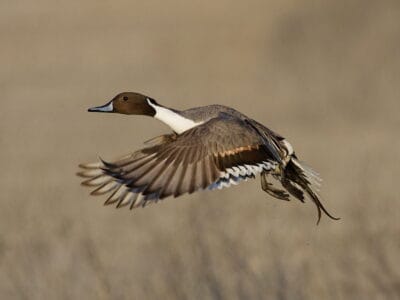
Northern Pintail
Northern pintails migrate at night with speeds reaching 48 miles per hour!
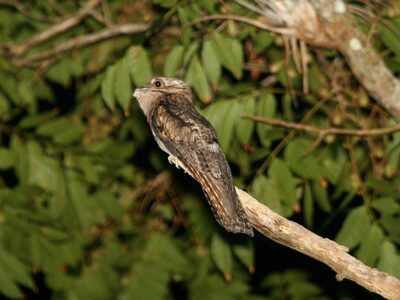
Northern Potoo
You can find them near golf courses in urban areas
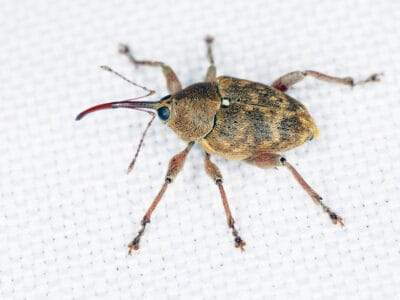
Nut Weevil
Bore holes in tree nuts and lay their eggs inside

Ocellated Turkey
These birds are timid and hard to spot, but their noisy gobbles give them away.

Ocelot
Also known as the Painted Leopard!
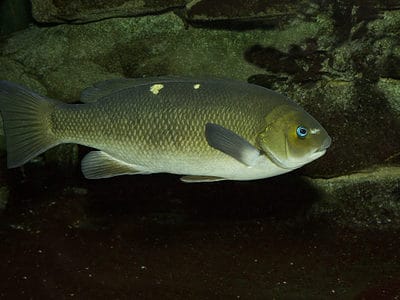
Opaleye (Rudderfish)
Some indigenous people of the Pacific coast of North America consider opaleye fish sacred food and use it in traditional ceremonies.
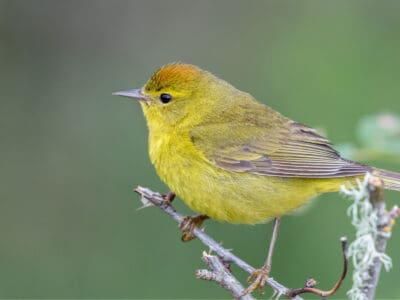
Orange-Crowned Warbler
Often mistaken for the Tennessee Warblers, which are equally dull.

Orb Weaver
Females are about four times the size of males
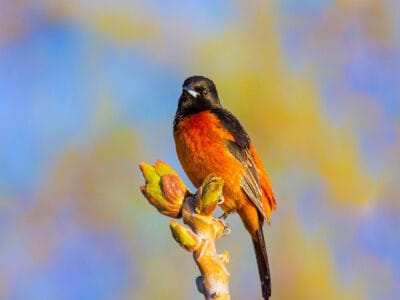
Orchard Oriole
They use rapid wingbeats to hover over foliage as they search for food.

Ornate Black-Tailed Rattlesnake
Ornate black-tailed rattlesnake mothers stay with their newborn babies for up to a month.

Osprey
They reuse nesting sites for 70 years!

Otter
There are 13 different species worldwide

Owl
The owl can rotate its head some 270 degrees

Owl Butterfly
Owl butterflies derive their name from big spots on each hindwing that resemble owl eyes
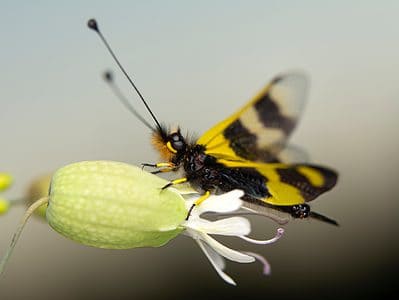
Owlfly (Ascalaphidae)
Adult owlflies can capture prey while flying in the air.

Painted Bunting
They are one of the most colorful species of birds.
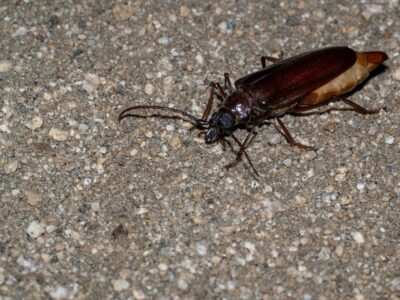
Palo Verde Beetle
The palo verde beetle is one of the largest beetles in North America
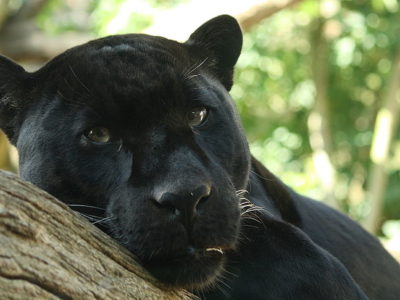
Panther
Prefers to hunt at night than during the day!
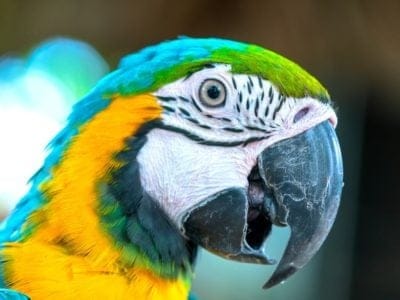
Parrot
Can live for up to 100 years!
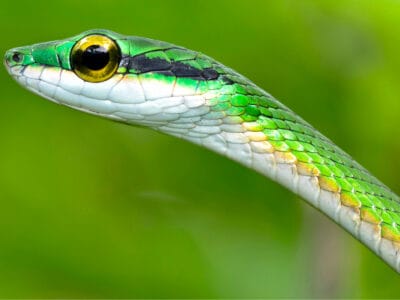
Parrot Snake
The parrot snake shows off with bright green and bronze colors that cover its entire body.
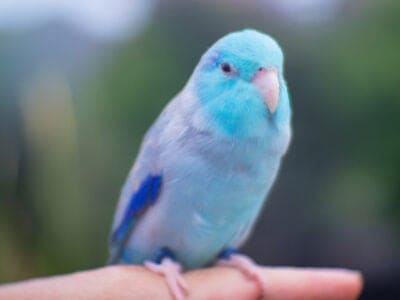
Parrotlet
Parrotlets aren't the world's tiniest parrot — that would be the pygmy parrot of Australasia.

Peregrine Falcon
Fastest animal on Earth

Pheasant
Females lay between 8 and 12 eggs per clutch!

Pigeon
They can find their way back to their nests from up to 1300 miles away.
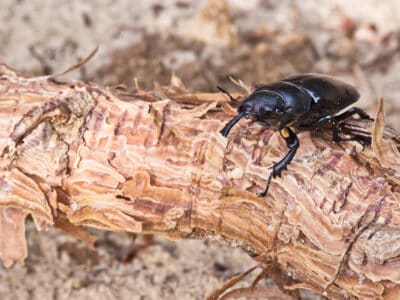
Pine Beetle
Female pine beetles can lay up to 75 eggs at once, and the males will stay with their mates for up to 3 weeks after fertilizing the eggs
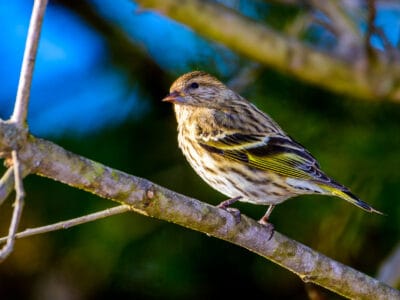
Pine Siskin
When foraging, pine siskins hang upside down to pick through the leaves and bark, collecting seeds from coniferous trees.

Pit Viper
Pit vipers's fangs fold up into their mouths when they don't need them.
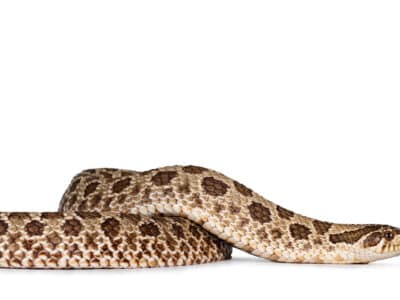
Plains Hognose Snake
The plains hognose snake gets its name from the upturned end of its snout.
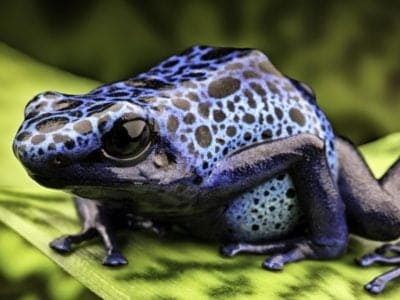
Poison Dart Frog
Inhabits the jungles of Central and South America!
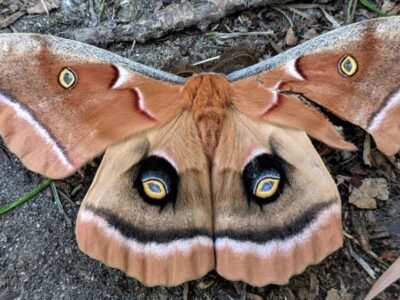
Polyphemus Moth
The Polyphemus moth doesn’t and can't eat, except when it's a caterpillar!
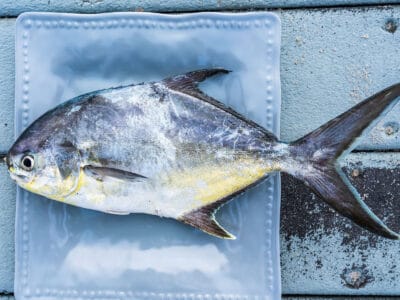
Pompano Fish
They are bottom-feeders
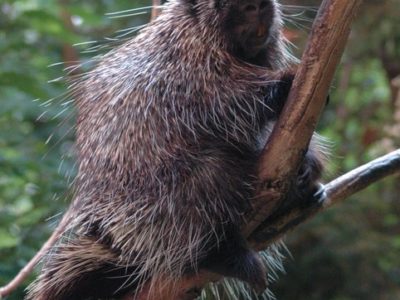
Porcupine
There are 30 different species worldwide!
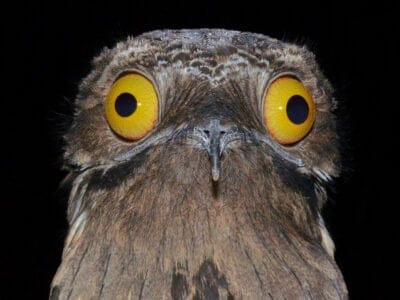
Potoo
The potoo’s eyelids have slits that let them see even when their eyes are closed.

Prairie Dog
Prairie dog “towns” can consists of hundreds of individuals
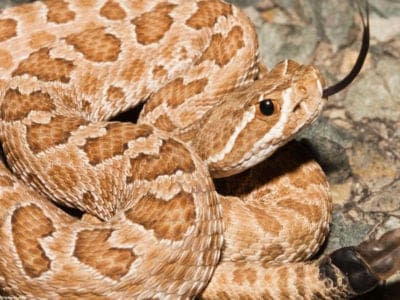
Prairie Rattlesnake
The striking distance of a prairie rattlesnake is 2/3rds the length of its body.
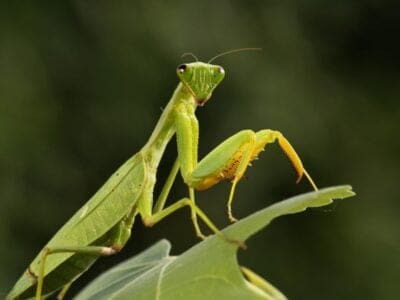
Praying Mantis
The mantis can turn its head 180 degrees.
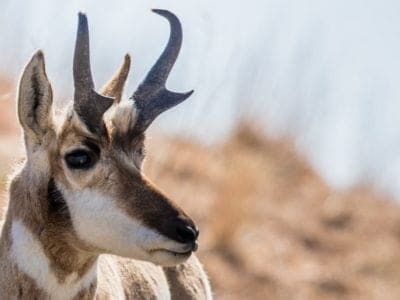
Pronghorn
While pronghorns are the fastest runner of any Western Hemisphere land animal, they are not good jumpers.

Puma
Has longer back legs than front legs!
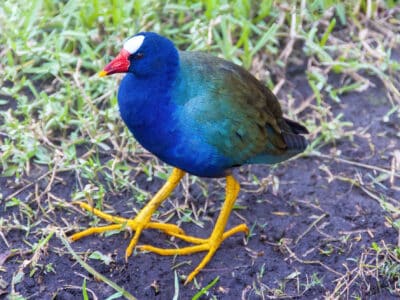
Purple Gallinule
They build their nests on the water, anchoring it to nearby aquatic vegetation.
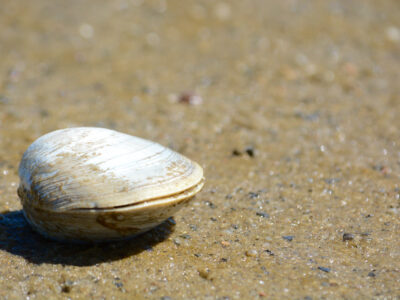
Quahog Clam
Their hinged shell protects their soft body

Quail
Inhabits woodland and forest areas worldwide!

Quetzal
The tail feathers of the male can be 1m long!

Raccoon
Known to wash their food before eating it!
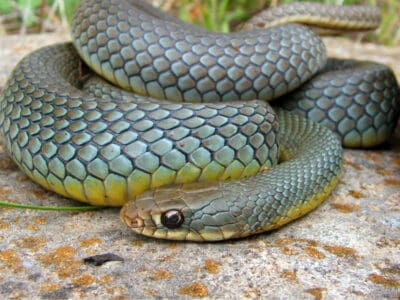
Racer Snake
The racer snake can speed away at up to 3.5 miles per hour
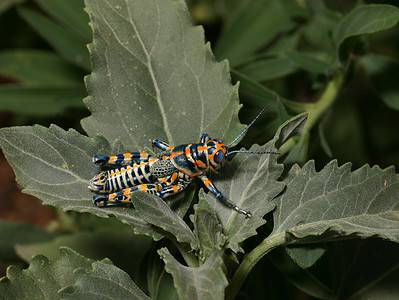
Rainbow Grasshopper (Dactylotum bicolor)
They have strikingly bright colors

Rat
Omnivores that eat anything!
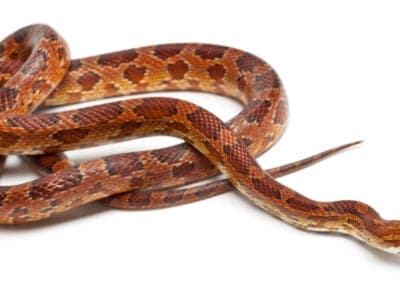
Rat Snakes
Rat snakes are constrictors from the Colubridae family of snakes.
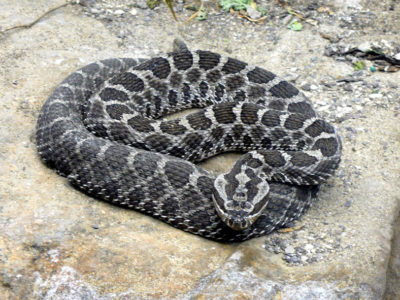
Rattlesnake
Rattlesnakes may have evolved their rattle to warn bison away from them.

Red Diamondback Rattlesnake
A rattlesnake can shake its rattle back and forth 20-100 times per second.
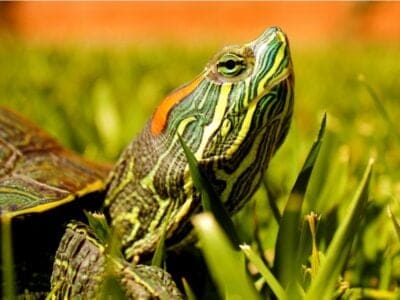
Red-Eared Slider
Sliders spend lots of time basking in the sun. As cold-blooded animals, they need the sun to heat up.
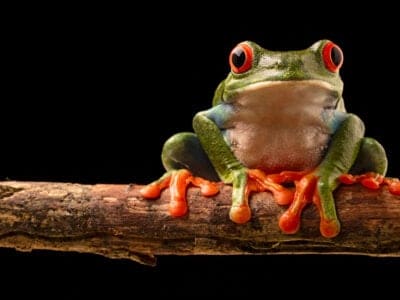
Red-Eyed Tree Frog
Despite their spectacular coloration, red-eyed tree frogs aren’t poisonous and can be kept as pets.

Red Finch
Red finches can form flocks of over 100 birds.
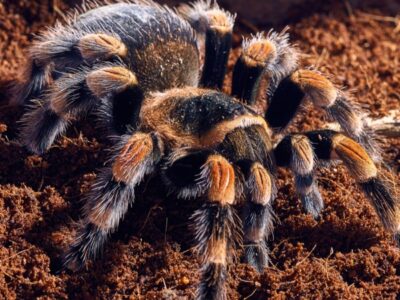
Red Knee Tarantula
Inhabits the Pacific Mountains of Mexico!
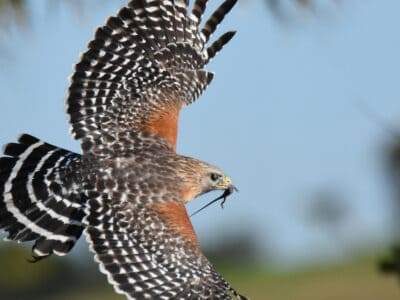
Red-Shouldered Hawk
Red-Shouldered Hawks reuse the same nesting area each year.
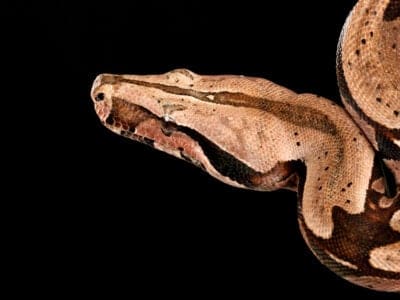
Red Tail Boa (common boa)
Red tailed boas don’t suffocate their prey, they squeeze until the heart stops circulating blood to the brain.

Red-winged blackbird
The male red-winged blackbird can sing to attract mates

Ring-billed Gull
The ring-billed gull feeds on vast quantities of human waste and garbage.

River Turtle
Inhabits freshwater habitats around the world!
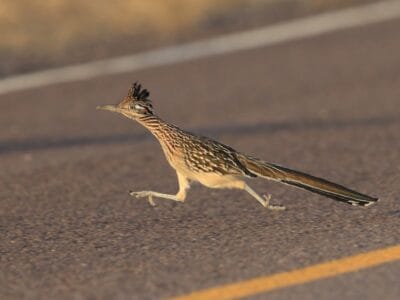
Roadrunner
Roadrunners are one of the few animals that prey on rattlesnakes and tarantula hawk wasps.

Robin
There are more than 45 species in Australia alone!

Rodents
The capybara, the world’s largest rodent, likes to be in and around bodies of water. Because of this, the Catholic Church in South America decided that it was a fish, and people were allowed to eat it during Lent and First Fridays.

Rooster
Will mate with the entire flock!
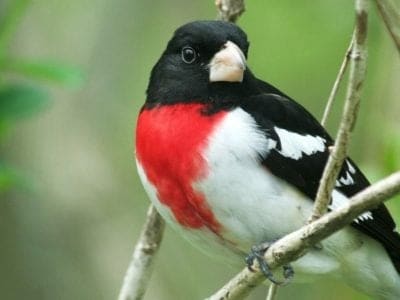
Rose-Breasted Grosbeak
This bird is also called cut-throat because the male looks like his throat has been cut and has bled over his breast.
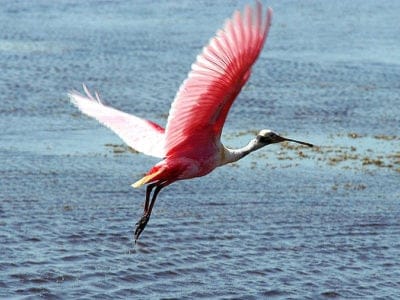
Roseate Spoonbill
The only Spoonbill in the western hemisphere!
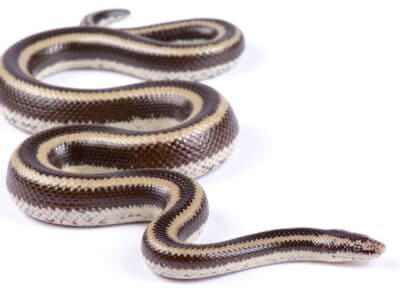
Rosy Boa
One of the few snakes that naturally comes in a rainbow of colors!
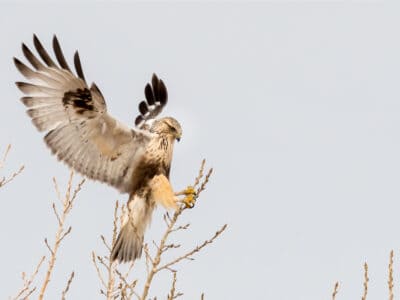
Rough-Legged Hawk (Rough-Legged Buzzard)
Its scientific name, lagopus, is Ancient Greek for “hare” and “foot,” referring to its feathered feet and toes.
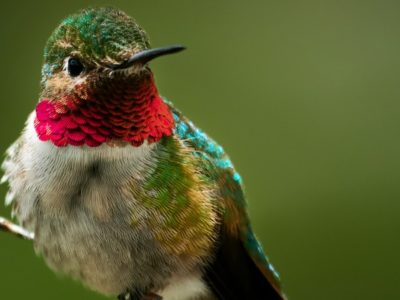
Ruby-Throated Hummingbird
Ruby-throated hummingbirds can beat their wings more than 50 times per second.
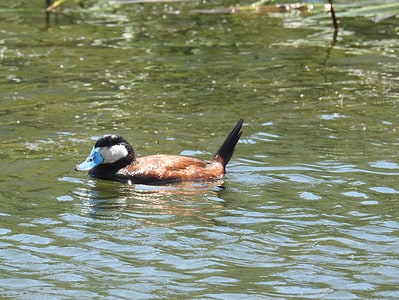
Ruddy Duck
Ruddy duck breeding males have bright blue bills!

Rufous Hummingbird
The males have a glowing iridescent orange patch on their chests.

Saber-Toothed Tiger
Canines up to 7 inches long!

Sable Ferret
Ferrets were used during the Revolutionary War to keep down the rat population.
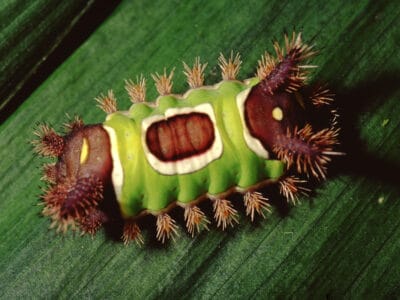
Saddleback Caterpillar
Saddleback caterpillars are solitary in nature, unlike many of their cousins that live in pairs or groups. They only intermingle when it's time to mate and lay eggs.
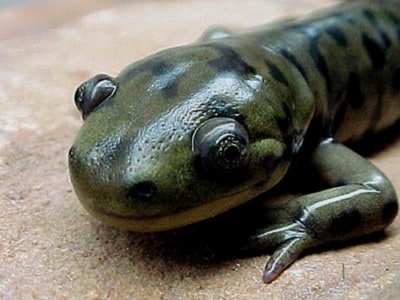
Salamander
There are more than 700 different species!
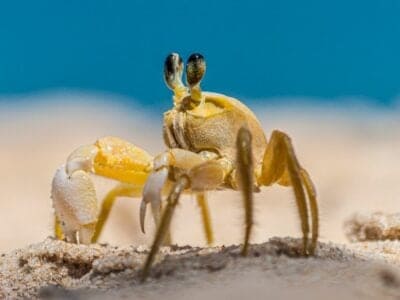
Sand Crab
The sand crab burrows beneath the sand with its tail
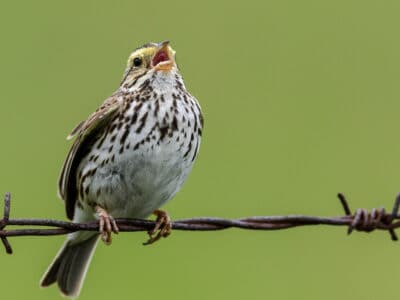
Savannah Sparrow
The Savannah sparrow gets its name because one of the first of this type of bird was found in the city of Savannah, Georgia.
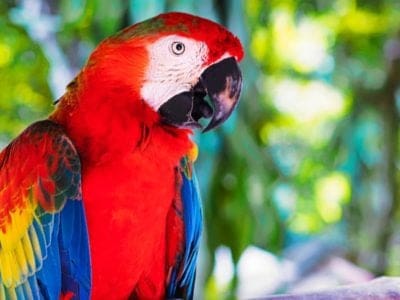
Scarlet Macaw
Like many parrots, the scarlet macaw is capable of vocal mimicry.
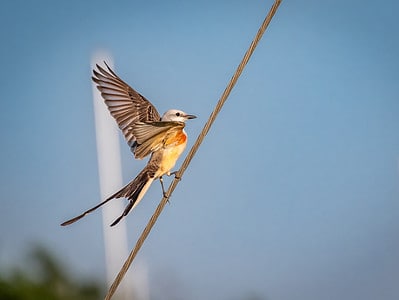
Scissor-tailed Flycatcher
Scissor-tailed flycatchers are known for their dramatically long tails!

Scorpion
There are around 2,000 known species!
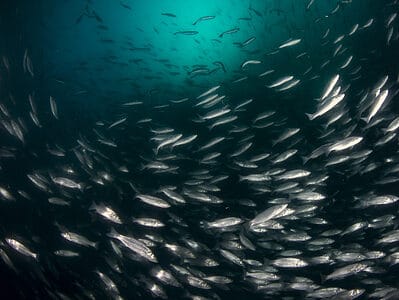
Sea Bass
Sea bass can grow up to 880 pounds in weight!

Sea Eagle
The sea eagle tends to mate for life with a single partner

Seagull
Some gulls are capable of using tools

Seahorse
Males give birth to up to 1,000 offspring!
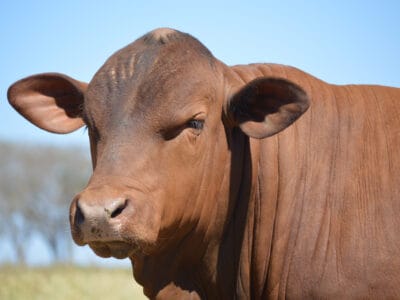
Senepol Cattle
Senepol cattle have a distinctive red color and no horns.
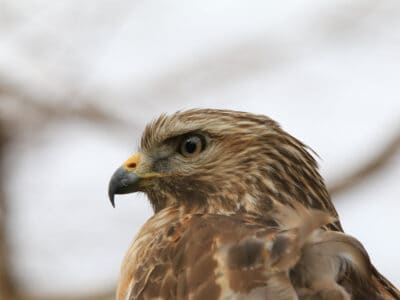
Sharp-Shinned Hawk
In captivity, sharp-shinned hawks can live up to 13 years. However, in the wild, this number is significantly reduced to 3 years!

Sheep
Around 35 million in the English countryside!
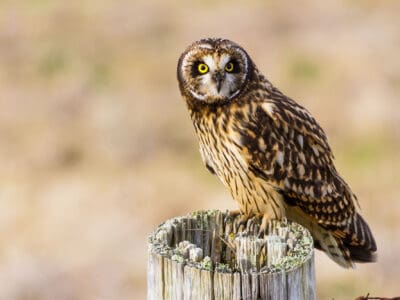
Short-Eared Owl
The short-eared owl is one of the most widespread owl species in the world, covering five continents.
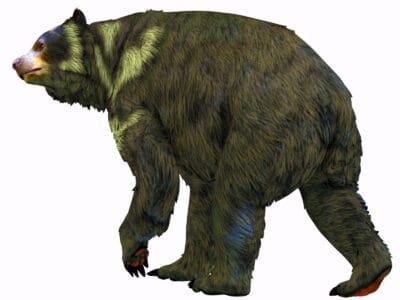
Short-Faced Bear
The modern Spectacled Bear, which lives in South America, is related to the Short-Faced Bear!

Shrew
The spinal column of the shrew Scutisorex somereni is so strong and reinforced that it can support the weight of an adult human.

Shrimp
There are 2,000 different species worldwide!

Skink Lizard
Some skinks lay eggs in some habitats while giving birth to skinklets in other habitats.

Sloth
It's body temperature is between 30 - 34 degrees!

Slug
They glide around on one foot, which is aided by the slime they produce

Smallmouth Bass
A fierce fighter!

Smokybrown Cockroach
Has up to 45 eggs per egg case

Snail
There are nearly 1,000 different species!

Snake
There are around 4,000 known species worldwide
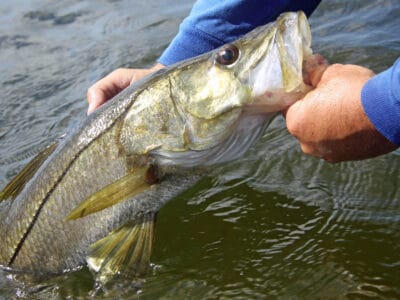
Snook Fish
Males change into females after the spawning season

Snow Goose
The snow goose has a dark line along their beaks known as a ‘grinning patch’!
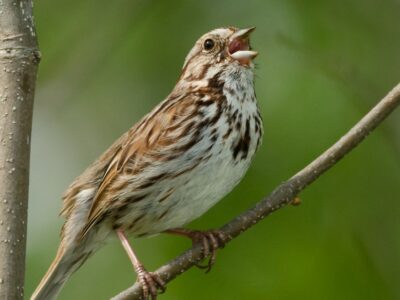
Song Sparrow
Pumps its tail when it flies!
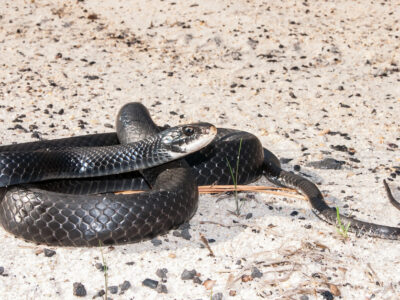
Southern Black Racer
These snakes live underground, beneath piles of leaf litter or in thickets, and they are expert swimmers.
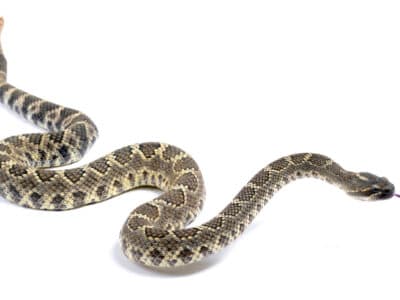
Southern Pacific Rattlesnake
Southern Pacific rattlesnakes hibernate in dens that hold hundreds of snakes.
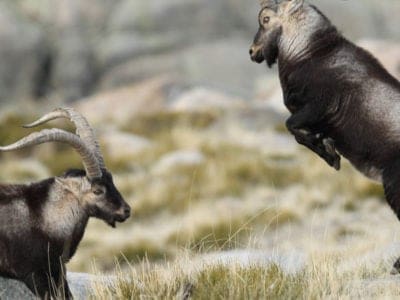
Spanish Goat
They have long, horizontal ears.

Sparrow
There are 140 different species!

Spider Monkey
Belongs to the only family of primates in the world with full prehensile tails!

Spider Wasp
They prey on spiders to feed their larvae or they parasitize other spider wasps.
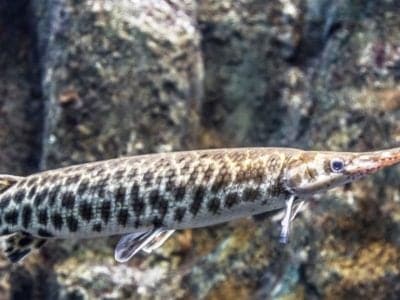
Spotted Gar
They are commonly mistaken as logs in the water due to their cylindrical body.
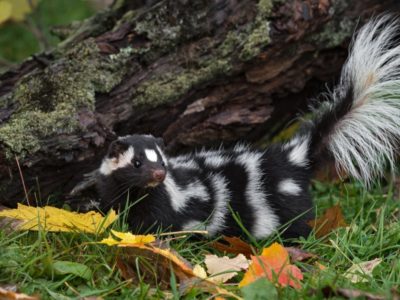
Spotted Skunk
Spotted skunks are known for their acrobatic abilities. They perform handstands before spraying their enemies.

Squirrel
Small rodents found in woodlands worldwide!

Stick Insect
There are more than 3,000 different species!

Stork
They can’t sing like other birds.
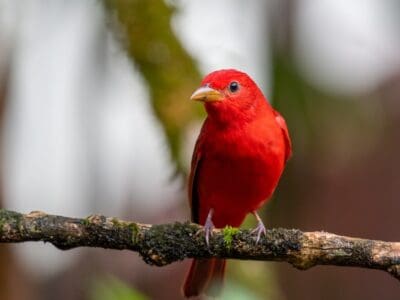
Summer Tanager
They remove bee stingers by rubbing them against a tree
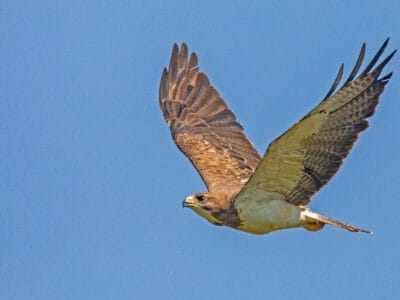
Swainson’s Hawk
Their wings form a “V” shape when flying.

Swan
Populations have been affected by pollution!

Tarantula Hawk
Tarantula hawks are excellent pollinators, especially for milkweed.
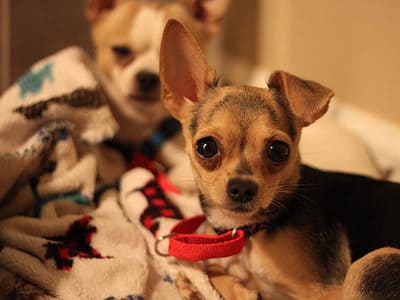
Teacup Chihuahua
Teacup Chihuahuas are not a separate breed but result from breeding the smallest pups from litters.

Termite
Their mounds can be up to 9 meters tall!

Texas Blind Snake
These snakes grow to just 11 inches long
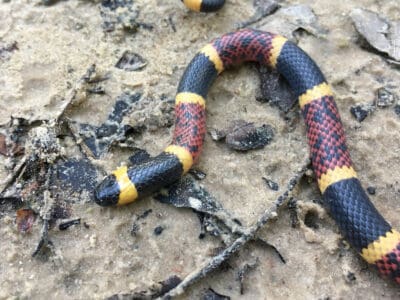
Texas Coral Snake
Texas coral snakes have the second most powerful venom in the world

Texas Indigo Snake
Texas Indigo Snakes are known for chasing down, overpowering, and eating rattlesnakes.
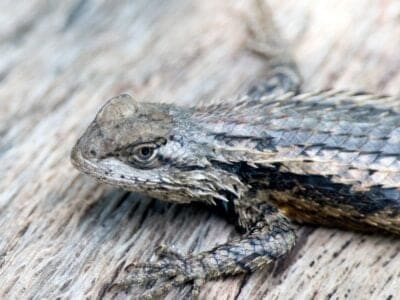
Texas Spiny Lizard
They hold push-up competitions!

Theropod
Some theropods had feathers and may have been ancestors of modern birds.

Thrush
The American robin is called the robin because its red breast reminded European settlers of the robin back in the old country.

Tick
They inject hosts with a chemical that stops them from feeling the pain of the bite

Tiger Beetle
The adult tiger beetle is one of the fastest land insects in the world
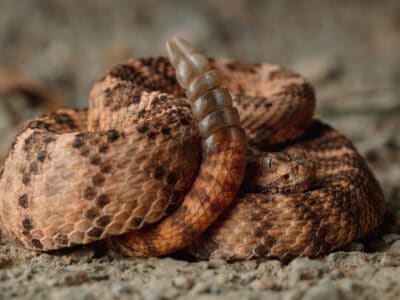
Tiger Rattlesnake
These rattlesnakes have the smallest heads of any rattlesnake.
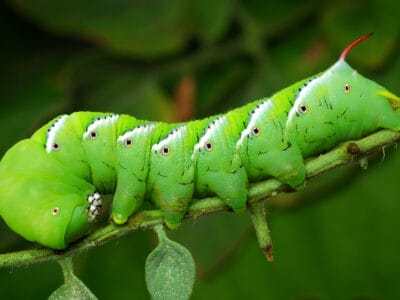
Tomato Hornworm
The tomato hornworm is a ferocious pest that can eat all parts of a plant, including the fruits.

Tortoise
Can live until they are more than 150 years old!
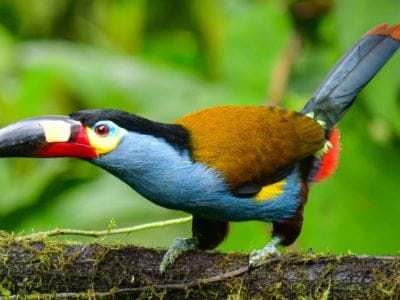
Toucan
There are more than 40 different species!
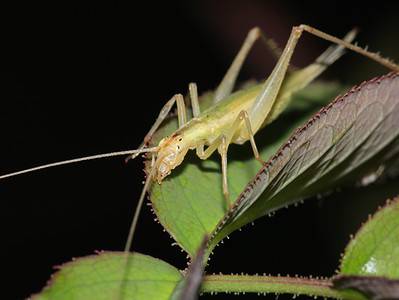
Tree Cricket
They make music with their wings

Tree Frog
Found in warmer jungles and forests!

Tree swallow
The tree swallow can make more than a dozen distinct vocalizations

Turtles
Some species of aquatic turtles can get up to 70 percent of their oxygen through their butt.
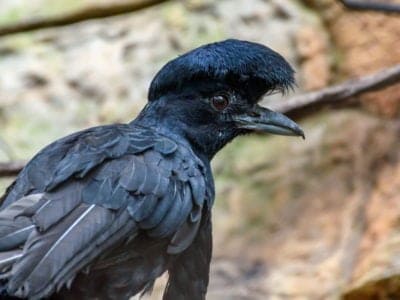
Umbrellabird
Migrates up and down the mountains!
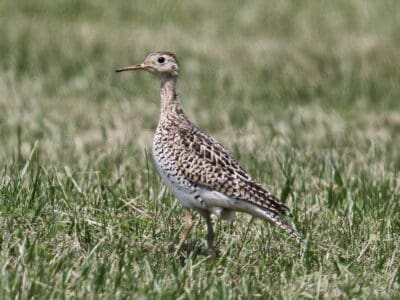
Upland Sandpiper
They make jerky movements as they walk through the grass, searching for food.
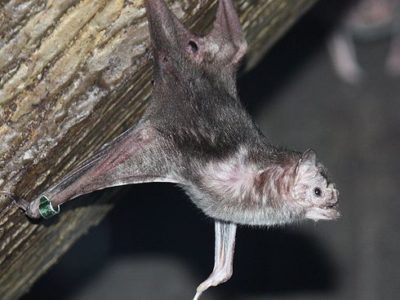
Vampire Bat
Have a heat sensor on the end of their nose!
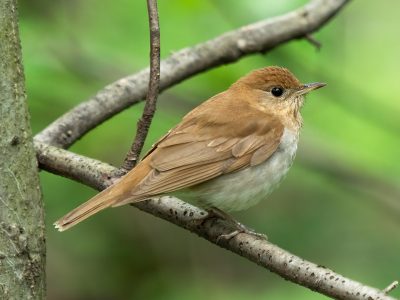
Veery
The veery is named for its sharp "veer" call.

Vermilion Flycatcher
They have a fast song that lasts up to 10 syllables at max.
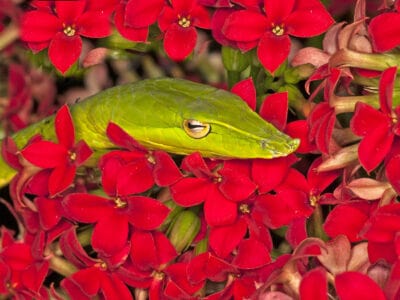
Vine Snake
A slender body and elongated snout give the vine snake a regal look.
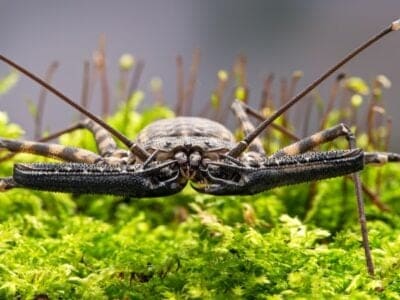
Vinegaroon
Vinegaroons can spray 19 times before the glands are depleted

Vulture
There are 30 different species worldwide!
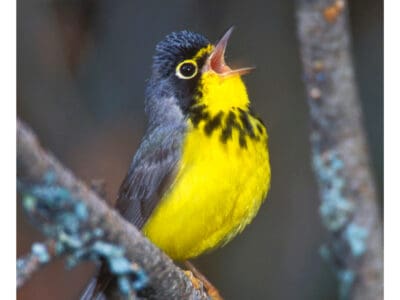
Warbler
Warblers are so called because of the trills of their song.

Wasp
There are around 75,000 recognised species!
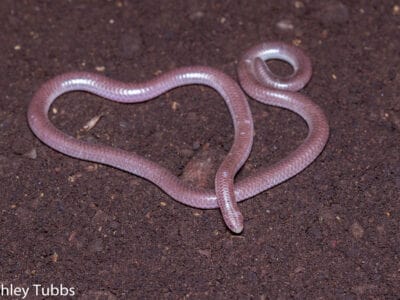
Western Blind Snake
Western blind snakes are flourescent in black light!
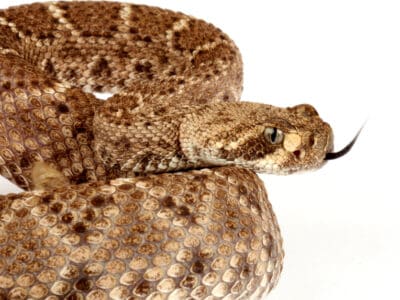
Western Diamondback Rattlesnake
They replace their fangs 2-4 times per year!
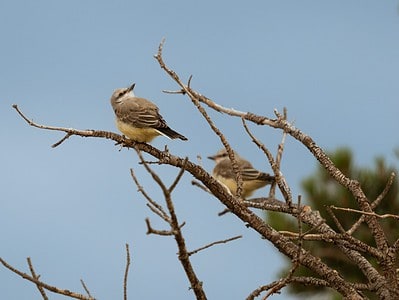
Western Kingbird
Western kingbirds have hidden red crown feathers that they can raise when threatened!
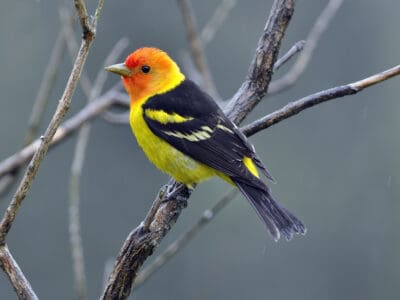
Western Tanager
They migrate farther north than any other tanager.

Whiptail Lizard
Many whiptail species reproduce asexually.
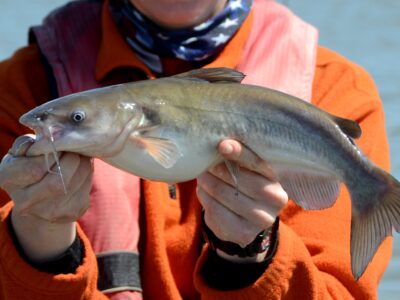
White Catfish
White catfish can grow up to 37 inches in size.

White-Crowned Sparrow
Males learn distinct songs from the community they grew up in and continue to sing in the same dialect as adults.

White-Eyed Vireo
During courtship, males put on exciting displays by fluffing their plumage, spreading their tails, and letting out a whining call.
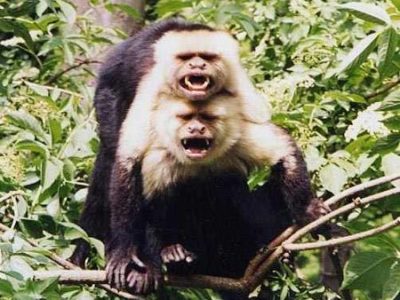
White-Faced Capuchin
One of the world's most intelligent monkeys!

White Ferret / Albino Ferrets
There are two different types of white ferrets!
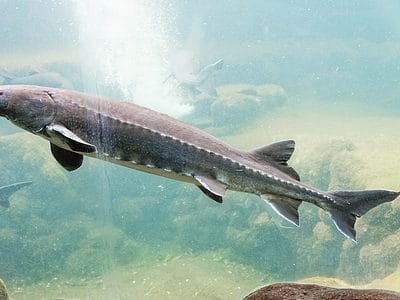
White Sturgeon
They don't have any teeth!
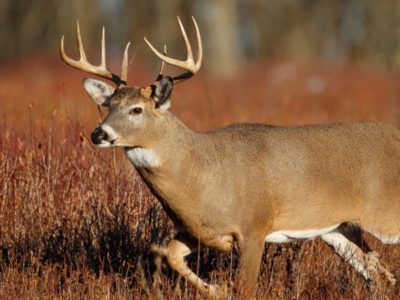
White-tail deer
White-tail deer are good swimmers
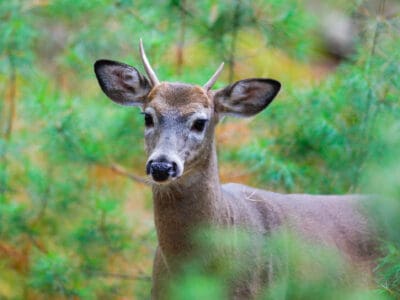
Whitetail Deer
Although deer are herbivores, they will sometimes eat mice and birds when they can catch them.

Willow Flycatcher
These birds live in the understory and are named for their propensity for flitting between willows and shrubs.
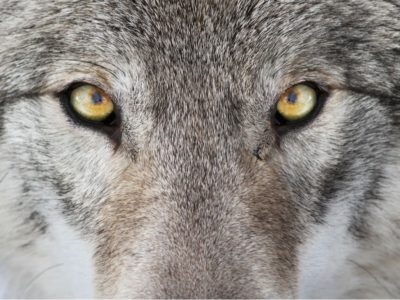
Wolf
Thought to date back more than 300,000 years!

Wolf Spider
Carnivorous arachnid that hunts its prey.
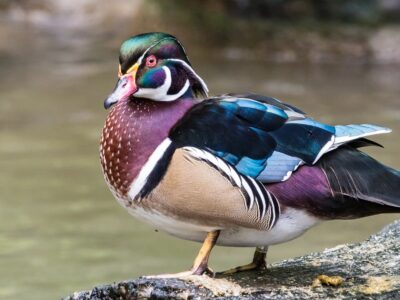
Wood Duck
Adult male wood ducks sport a striking red eye and bill year-round!

Wood Turtle
Temperature determines the sex of turtle eggs

Woodlouse
This animal can roll up into a ball

Woodpecker
There are 200 different species!

Worm
Doesn’t have eyes.
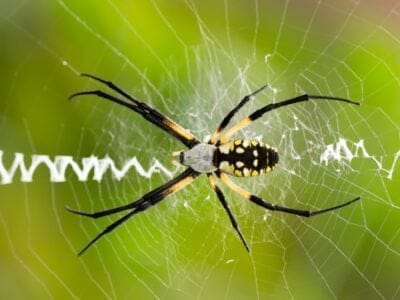
Writing Spider
males pluck webs like strings on a guitar

Xeme (Sabine’s Gull)
They follow after seals and whales to eat their scraps.
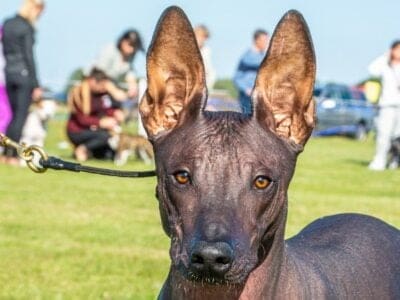
Xoloitzcuintli
The Xoloitzcuintli is the national dog of Mexico
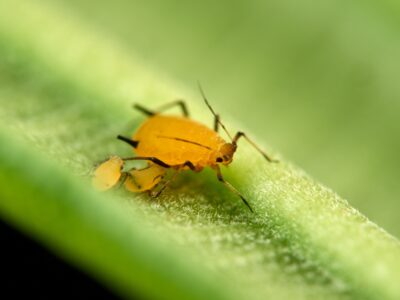
Yellow Aphids
These aphids are primarily wingless; however, once the infestation on their host gets too crowded, they develop wings, allowing them to fly to a new host plant.

Yellow Bellied Sapsucker
The males are responsible for choosing the nesting tree most of the time. Luckily, cavity nests are often reused for multiple breeding seasons (up to 7 years.)
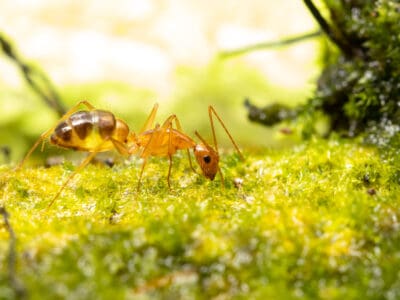
Yellow Crazy Ant
One of the top 100 worst invasive species!

Yellow Spotted Lizard
Gives birth to live young.

Yellowthroat
They forage near the ground, searching leaves for insects
Mexican Animals List
- Acadian Flycatcher
- Admiral Butterfly
- Agouti
- Alligator Gar
- Amazon Parrot
- American Eel
- American Robin
- Anhinga
- Anna’s Hummingbird
- Anole Lizard
- Ant
- Anteater
- Apple Head Chihuahua
- Arctodus
- Arizona Bark Scorpion
- Arizona Blonde Tarantula
- Armadillo
- Armyworm
- Asian Lady Beetle
- Australorp Chicken
- Axolotl
- Bagworm Moth Caterpillar
- Baird’s Rat Snake
- Barn Owl
- Barn Swallow
- Barred Owl
- Basilisk Lizard
- Bat
- Bear
- Bed Bugs
- Bee
- Beetle
- Beewolf wasp
- Belted Kingfisher
- Bighorn Sheep
- Bird
- Biscuit Beetle
- Black and White Warbler
- Black-Bellied Whistling Duck
- Black Sea Bass
- Black-Tailed Rattlesnake
- Black Widow Spider
- Black Witch Moth
- Blackburnian Warbler
- Blind Snake
- Blue Belly Lizard
- Blue Catfish
- Blue Death Feigning Beetle
- Blue Dragon Sea Slug
- Blue Gray Gnatcatcher
- Blue grosbeak
- Blue Tanager (Blue-Grey Tanager)
- Blue Tang
- Bluegill
- Boas
- Bobcat
- Booby
- Bowfin
- Box Jellyfish
- Box Turtle
- Brahminy Blindsnake
- Brazilian Treehopper
- Brown Dog Tick
- Brown Headed Cowbird
- Buffalo Fish
- Bullfrog
- Bullsnake
- Burrowing Owl
- Butterfly
- Cactus Wren
- Caecilian
- Caiman
- California Condor
- California Kingsnake
- Camel Cricket
- Camel Spider
- Cantil
- Canvasback
- Cardinal
- Carpenter Ant
- Cat
- Cat-Eyed Snake
- Caterpillar
- Catfish
- Cedar Waxwing
- Centipede
- Checkered Garter Snake
- Chestnut-Sided Warbler
- Chickadee
- Chicken
- Chicken Snake
- Chihuahua
- Cichlid
- Clearnose Skate
- Coachwhip Snake
- Coati
- Cockroach
- Codling Moth
- Collared Peccary
- Common Furniture Beetle
- Common Goldeneye
- Common Grackle
- Common House Spider
- Common Raven
- Common Yellowthroat
- Congo Snake
- Cooper’s Hawk
- Copperhead
- Coral Snake
- Costa’s Hummingbird
- Coues Deer
- Cow
- Coyote
- Crab
- Crab Spider
- Cricket
- Crocodile
- Crocodylomorph
- Crow
- Cuckoo
- Cucumber Beetle
- Dark-Eyed Junco
- Dark-Eyed Junco
- De Kay’s Brown Snake
- Death’s Head Cockroach
- Deer Head Chihuahua
- Deer Mouse
- Deinosuchus
- Desert Tortoise
- Desmostylus
- Dickcissel
- Diminutive Woodrat
- Dire Wolf
- Dog
- Dog Tick
- Donkey
- Dragonfly
- Dubia Cockroach
- Duck
- Dung Beetle
- Dungeness Crab
- Dusky Shark
- Dwarf Boa
- Eagle
- Earthworm
- Earwig
- Eastern Bluebird
- Eastern Fence Lizard
- Eastern Kingbird
- Eastern Meadowlark
- Eastern Phoebe
- Eastern Racer
- Eastern Turkey (Wild Turkey)
- Eel
- Elegant Tern
- Elephant Beetle
- Elf Owl
- Emerald Toucanet
- European Starling
- Evening Grosbeak
- Executioner Wasp
- Eyelash Viper
- Falcon
- False Widow Spider
- Fer-de-lance Snake
- Ferruginous Hawk
- Fiddler Crab
- Figeater Beetle
- Firefly
- Flamingo
- Flathead Catfish
- Flea
- Fly
- Flying Squirrel
- Fox Squirrel
- Frog
- Fruit Fly
- Fulvous Whistling Duck
- Gar
- Garter Snake
- Gecko
- German Cockroach
- Giant Desert Centipede
- Giant Leopard Moth
- Glowworm
- Gnat
- Golden-Crowned Kinglet
- Golden Eagle
- Golden Tortoise Beetle
- Goliath Grouper
- Gopher
- Gopher Snake
- Grass Snake
- Grass Spider
- Grasshopper
- Grasshopper Mouse
- Gray Catbird
- Gray Fox
- Great Blue Heron
- Great Crested Flycatcher
- Great Plains Rat Snake
- Great Potoo Bird
- Green Snake
- Green Sunfish
- Ground Snake
- Grunion
- Guppy
- Gypsy Moth
- Hairy Woodpecker
- Hammond’s flycatcher
- Hamster
- Hare
- Harlequin Coral Snake
- Harpy Eagle
- Harris’s Hawk
- Hawk Moth Caterpillar
- Hepatic Tanager (Red Tanager)
- Hercules Beetle
- Heron
- Herring Gull
- Hobo Spider
- Hogfish
- Hognose snake
- Honey Bee
- Hooded Oriole
- Horned Lizard
- Horse
- Horsefly
- Horseshoe Crab
- House Finch
- House wren
- Housefly
- Human
- Hummingbird
- Huntsman Spider
- Ibis
- Iguana
- Imperial Moth
- Indigo Snake
- Insects
- Io Moth
- Jabiru
- Jacana
- Jack Crevalle
- Jackrabbit
- Jaguar
- Jaguarundi Cat
- Jumping Spider
- Kangaroo Rat
- Keel-Billed Toucan
- Kentucky Warbler
- Killdeer
- King Vulture
- Kingfisher
- Kinkajou
- Kit Fox
- Kitefin Shark
- Ladybug
- Largemouth Bass
- Leafcutter Ant
- Least Flycatcher
- Leech
- Leopard Frog
- Leopard Lizard
- Lesser Scaup
- Lizard
- Lizardfish
- Locust
- Loggerhead Shrike
- Lone Star Tick
- Macaw
- MacGillivray’s Warbler
- Maggot
- Magnolia Warbler
- Mahi Mahi (Dolphin Fish)
- Mallard
- Margay
- Marine Toad
- Marmoset
- Massasauga
- May Beetle
- Mayan Cichlid
- Mayfly
- Mealybug
- Merganser
- Mexican Alligator Lizard
- Mexican Eagle (Northern crested caracara)
- Mexican Fireleg Tarantula
- Mexican Free-Tailed Bat
- Mexican Mole Lizard
- Milk Snake
- Millipede
- Mockingbird
- Mojave Rattlesnake
- Mole
- Mole Cricket
- Molly
- Monarch Butterfly
- Mongrel
- Monkey
- Moonglow Boa
- Moorhen
- Morpho Butterfly
- Mosquito
- Moth
- Mountain Bluebird
- Mountain Lion
- Mourning Dove
- Mourning Gecko
- Mourning Warbler
- Mouse
- Mule
- Mule Deer
- Muscovy Duck
- Muskrat
- Mussurana Snake
- Needlefish
- Nematode
- No See Ums
- Northern Bobwhite
- Northern Cardinal
- Northern Flicker
- Northern Harrier
- Northern Jacana
- Northern Parula
- Northern Pintail
- Northern Potoo
- Nut Weevil
- Ocellated Turkey
- Ocelot
- Opaleye (Rudderfish)
- Orange-Crowned Warbler
- Orb Weaver
- Orchard Oriole
- Ornate Black-Tailed Rattlesnake
- Osprey
- Otter
- Owl
- Owl Butterfly
- Owlfly (Ascalaphidae)
- Ox
- Painted Bunting
- Palo Verde Beetle
- Panther
- Parrot
- Parrot Snake
- Parrotlet
- Peregrine Falcon
- Pheasant
- Pigeon
- Pine Beetle
- Pine Siskin
- Pit Viper
- Plains Hognose Snake
- Poison Dart Frog
- Polyphemus Moth
- Pompano Fish
- Porcupine
- Potoo
- Prairie Dog
- Prairie Rattlesnake
- Praying Mantis
- Pronghorn
- Puma
- Purple Gallinule
- Quahog Clam
- Quail
- Quetzal
- Raccoon
- Racer Snake
- Rainbow Grasshopper (Dactylotum bicolor)
- Rat
- Rat Snakes
- Rattlesnake
- Red Diamondback Rattlesnake
- Red-Eared Slider
- Red-Eyed Tree Frog
- Red Finch
- Red Knee Tarantula
- Red Racer Snake
- Red-Shouldered Hawk
- Red Tail Boa (common boa)
- Red-winged blackbird
- Ring-billed Gull
- River Turtle
- Roadrunner
- Robin
- Rodents
- Rooster
- Rose-Breasted Grosbeak
- Roseate Spoonbill
- Rosy Boa
- Rough-Legged Hawk (Rough-Legged Buzzard)
- Ruby-Crowned Kinglet
- Ruby-Throated Hummingbird
- Ruddy Duck
- Rufous Hummingbird
- Saber-Toothed Tiger
- Sable Ferret
- Saddleback Caterpillar
- Salamander
- Sand Crab
- Sandhill Crane
- Savannah Sparrow
- Scarlet Macaw
- Scissor-tailed Flycatcher
- Scorpion
- Sea Bass
- Sea Eagle
- Seagull
- Seahorse
- Senepol Cattle
- Sharp-Shinned Hawk
- Sheep
- Short-Eared Owl
- Short-Faced Bear
- Shrew
- Shrimp
- Sidewinder
- Skink Lizard
- Sloth
- Slug
- Smallmouth Bass
- Smokybrown Cockroach
- Smooth Green Snake
- Snail
- Snake
- Snook Fish
- Snow Goose
- Song Sparrow
- Southern Black Racer
- Southern Pacific Rattlesnake
- Spanish Goat
- Sparrow
- Spider Monkey
- Spider Wasp
- Spotted Gar
- Spotted Skunk
- Squirrel
- Stick Insect
- Stork
- Summer Tanager
- Swainson’s Hawk
- Swallowtail Butterfly
- Swan
- Tarantula Hawk
- Teacup Chihuahua
- Termite
- Texas Blind Snake
- Texas Coral Snake
- Texas Indigo Snake
- Texas Spiny Lizard
- Theropod
- Thrush
- Tick
- Tiger Beetle
- Tiger Rattlesnake
- Tomato Hornworm
- Tortoise
- Toucan
- Tree Cricket
- Tree Frog
- Tree swallow
- Turkey
- Turkey Vulture
- Turtles
- Umbrellabird
- Upland Sandpiper
- Vampire Bat
- Veery
- Vermilion Flycatcher
- Vine Snake
- Vinegaroon
- Vulture
- Warbler
- Wasp
- Western Blind Snake
- Western Diamondback Rattlesnake
- Western Kingbird
- Western Tanager
- Whiptail Lizard
- White Catfish
- White-Crowned Sparrow
- White-Eyed Vireo
- White-Faced Capuchin
- White Ferret / Albino Ferrets
- White Sturgeon
- White-tail deer
- Whitetail Deer
- Willow Flycatcher
- Wolf
- Wolf Spider
- Wood Duck
- Wood Turtle
- Woodlouse
- Woodpecker
- Worm
- Writing Spider
- Xeme (Sabine’s Gull)
- Xoloitzcuintli
- Yellow Aphids
- Yellow Bellied Sapsucker
- Yellow Crazy Ant
- Yellow Spotted Lizard
- Yellowthroat
Animals in Mexico FAQs (Frequently Asked Questions)
What kind of cat species are found in Mexico?
Mexico has two main species of exotic big cats: the jaguar and the cougar. It also has four species of medium-sized cats: the ocelot, jaguarundi, margay, and Mexican bobcat.
What extinct animals once lived in Mexico?
Based on written evidence and the fossil record, we know that Mexico was once home to its own unique species of the grizzly bear, a large genus of short-faced bears (which went extinct around 11,000 years ago), and the Texas wolf (a subspecies of the gray wolf).
What's the tallest mountain in Mexico?
At 18,490 feet, Pico de Orizaba is the highest peak in Mexico. It is one of the many magnificent mountains in Mexico worth exploring.



